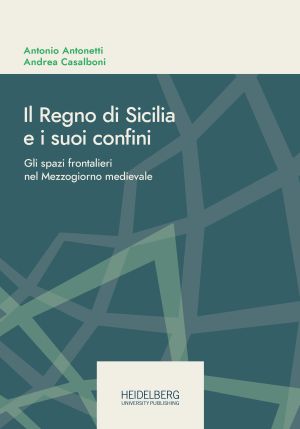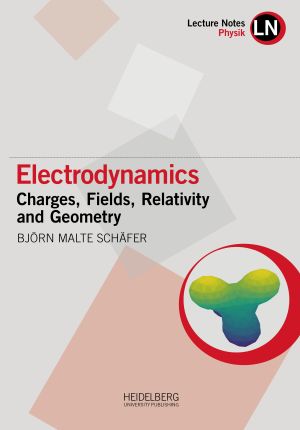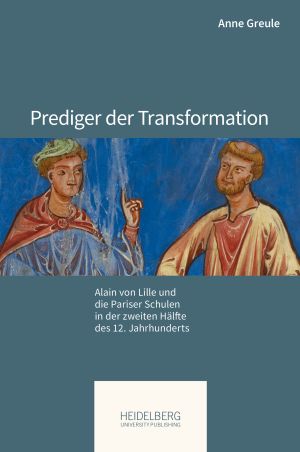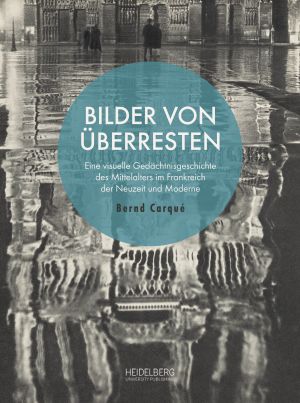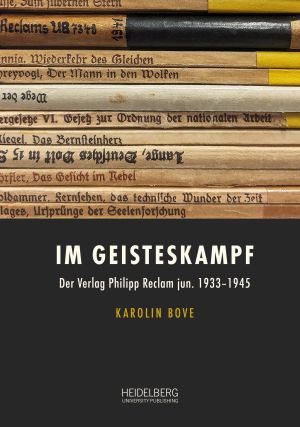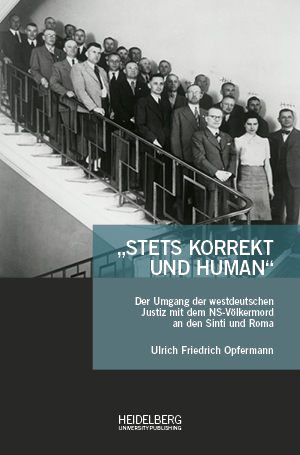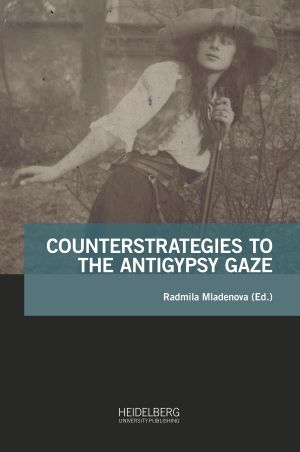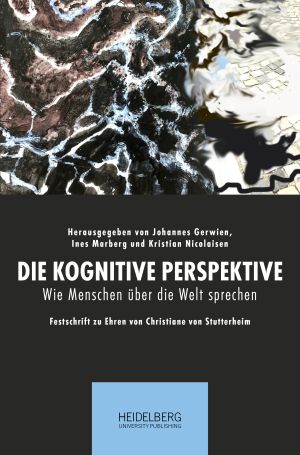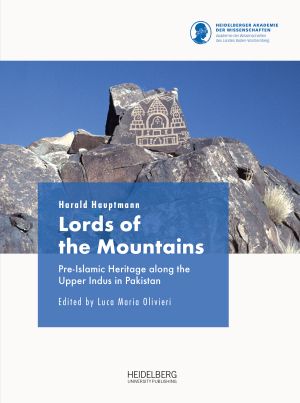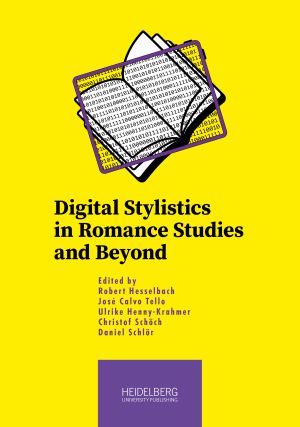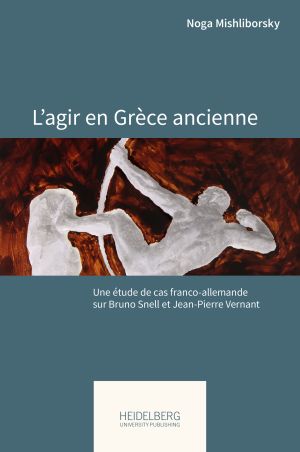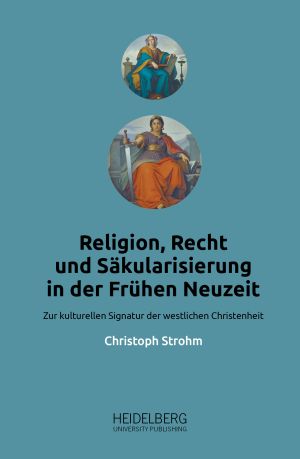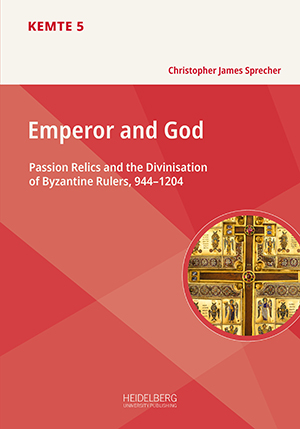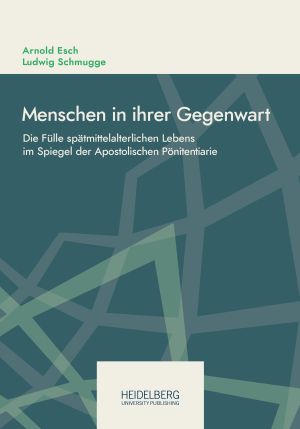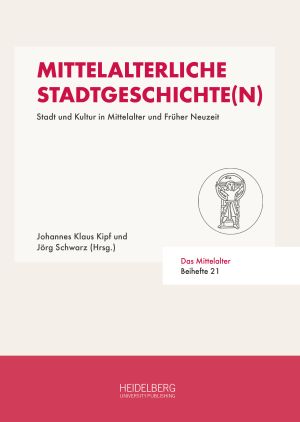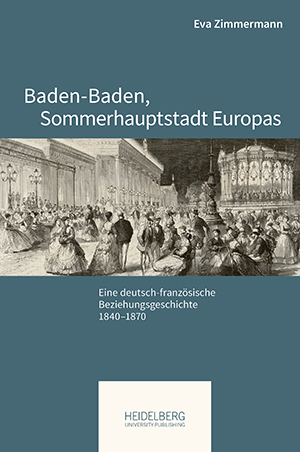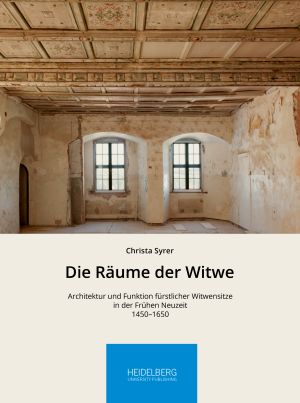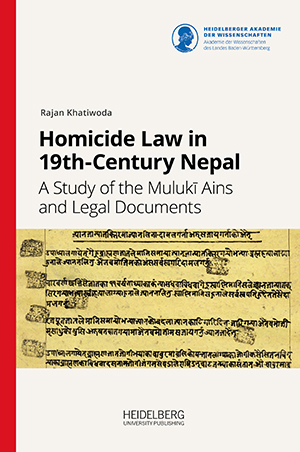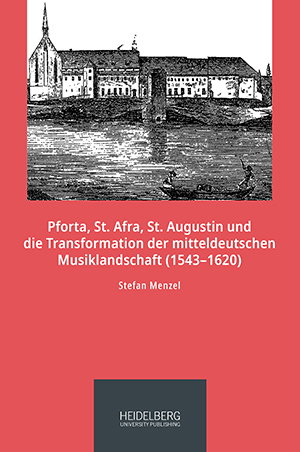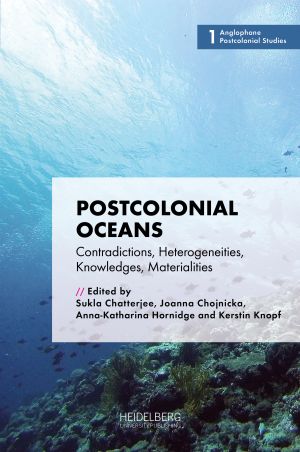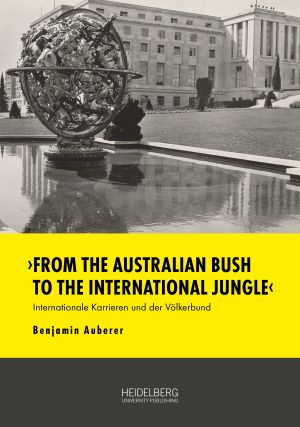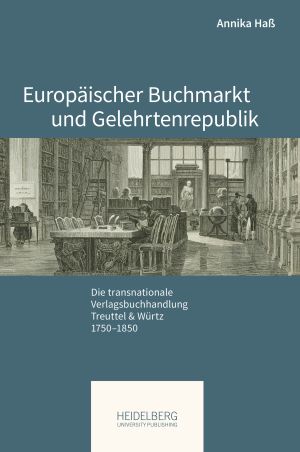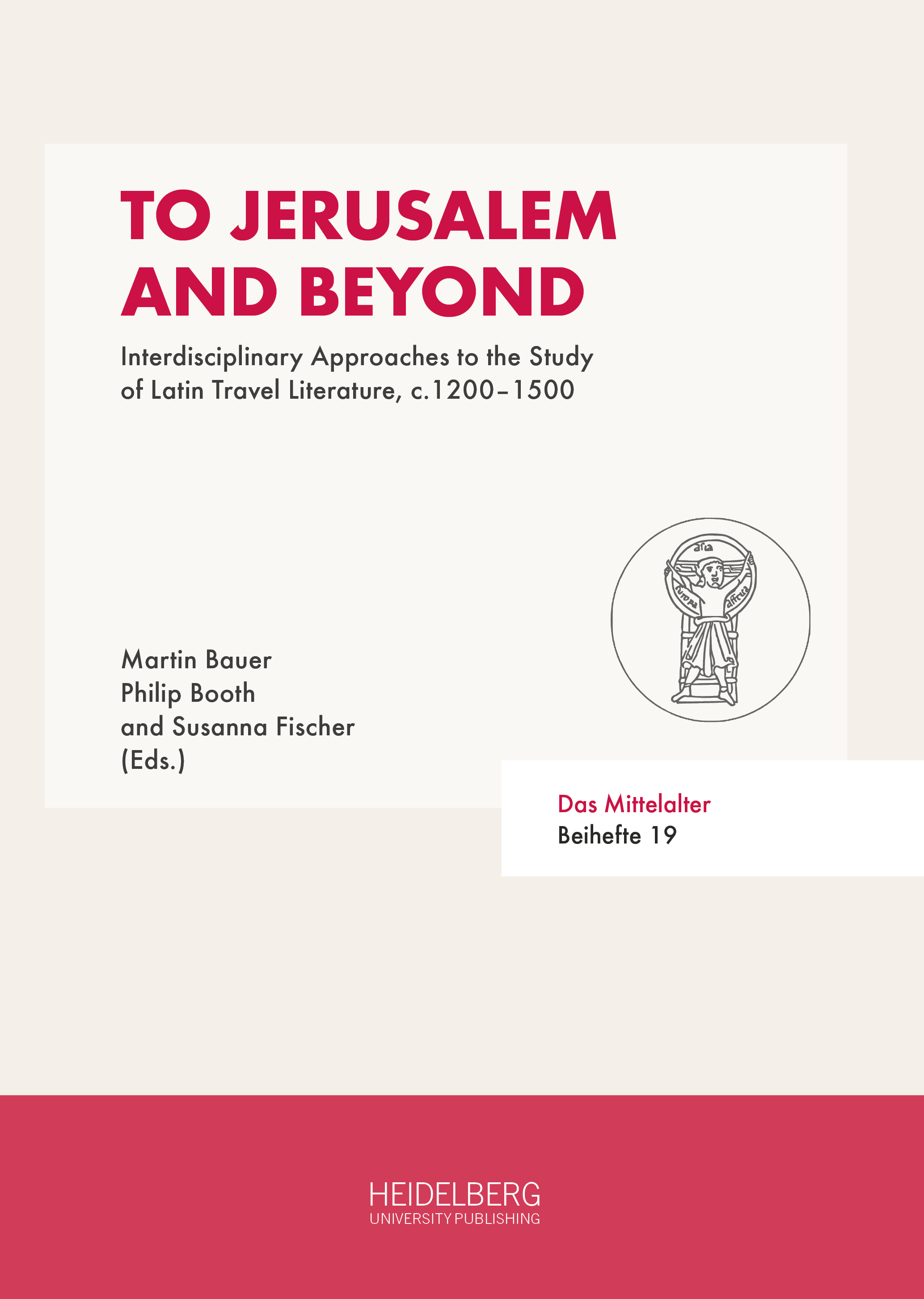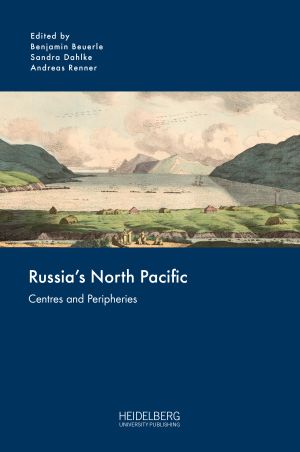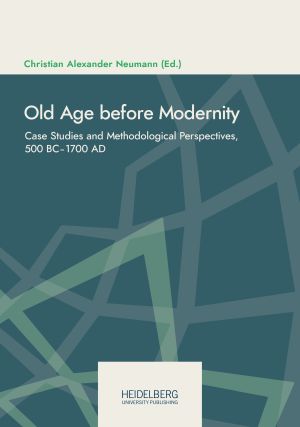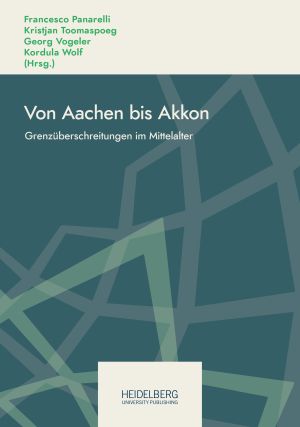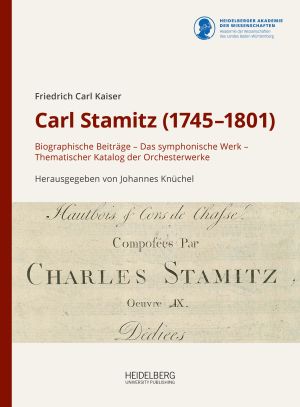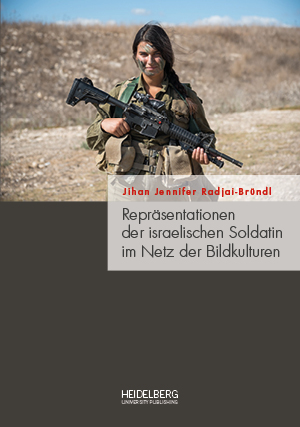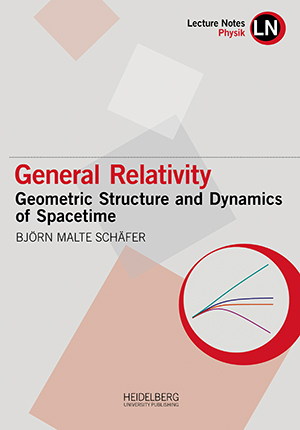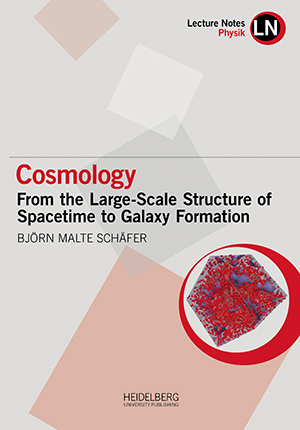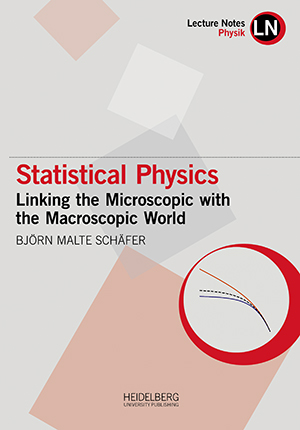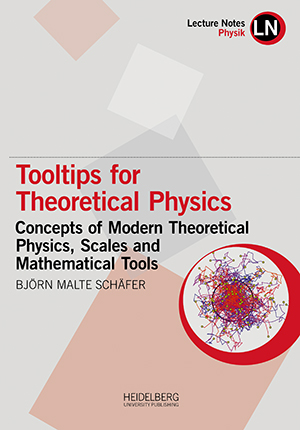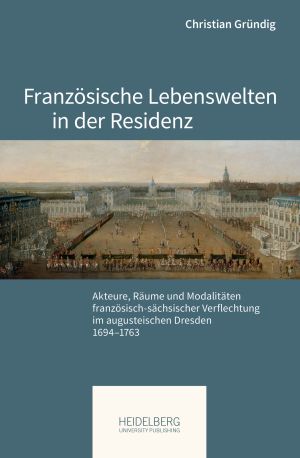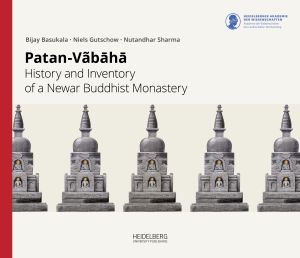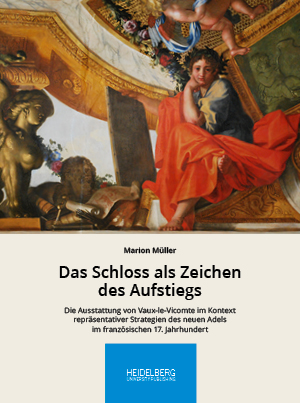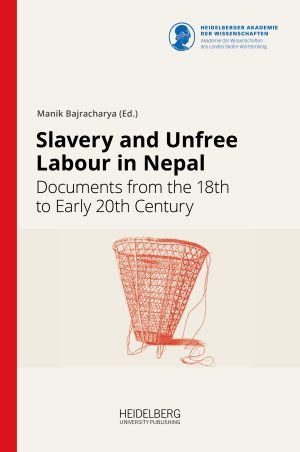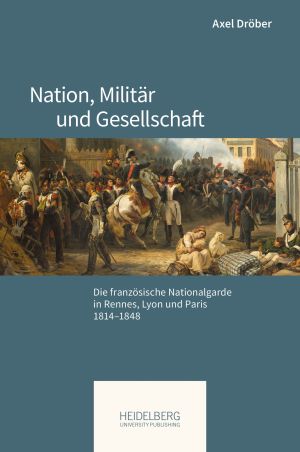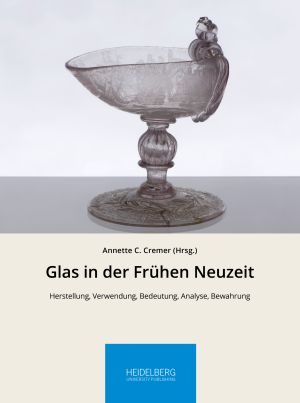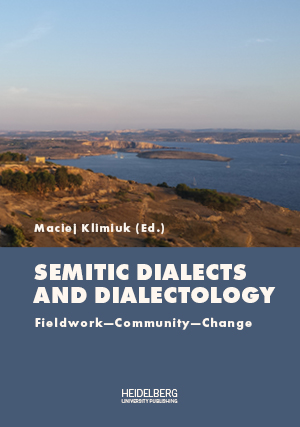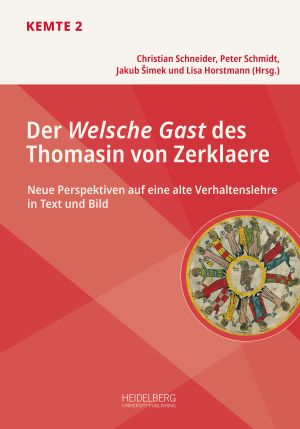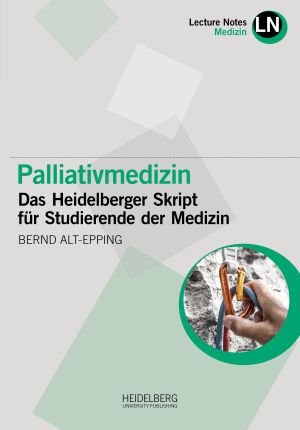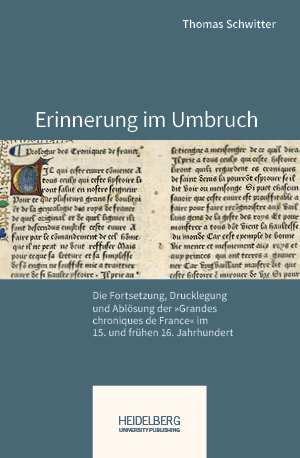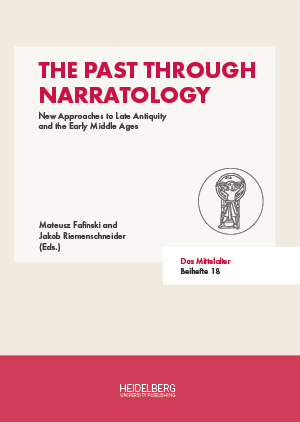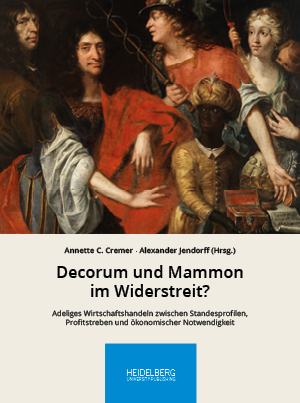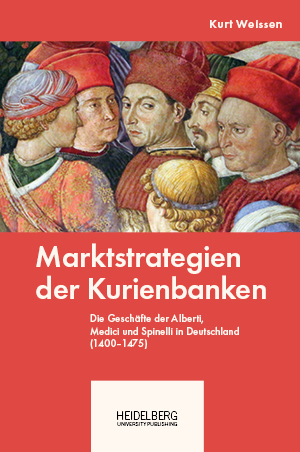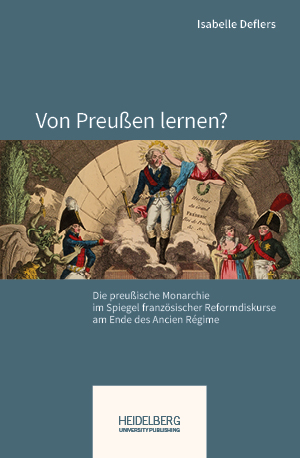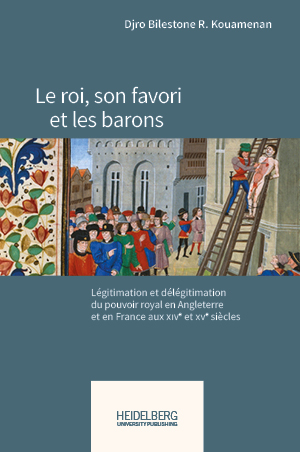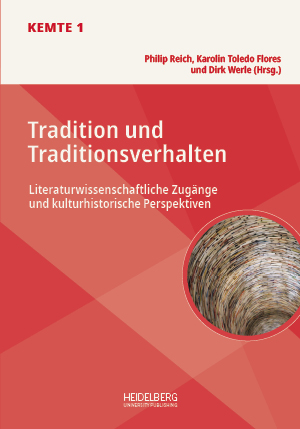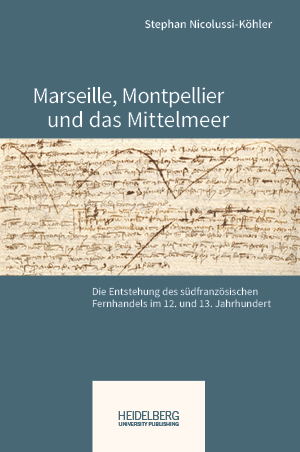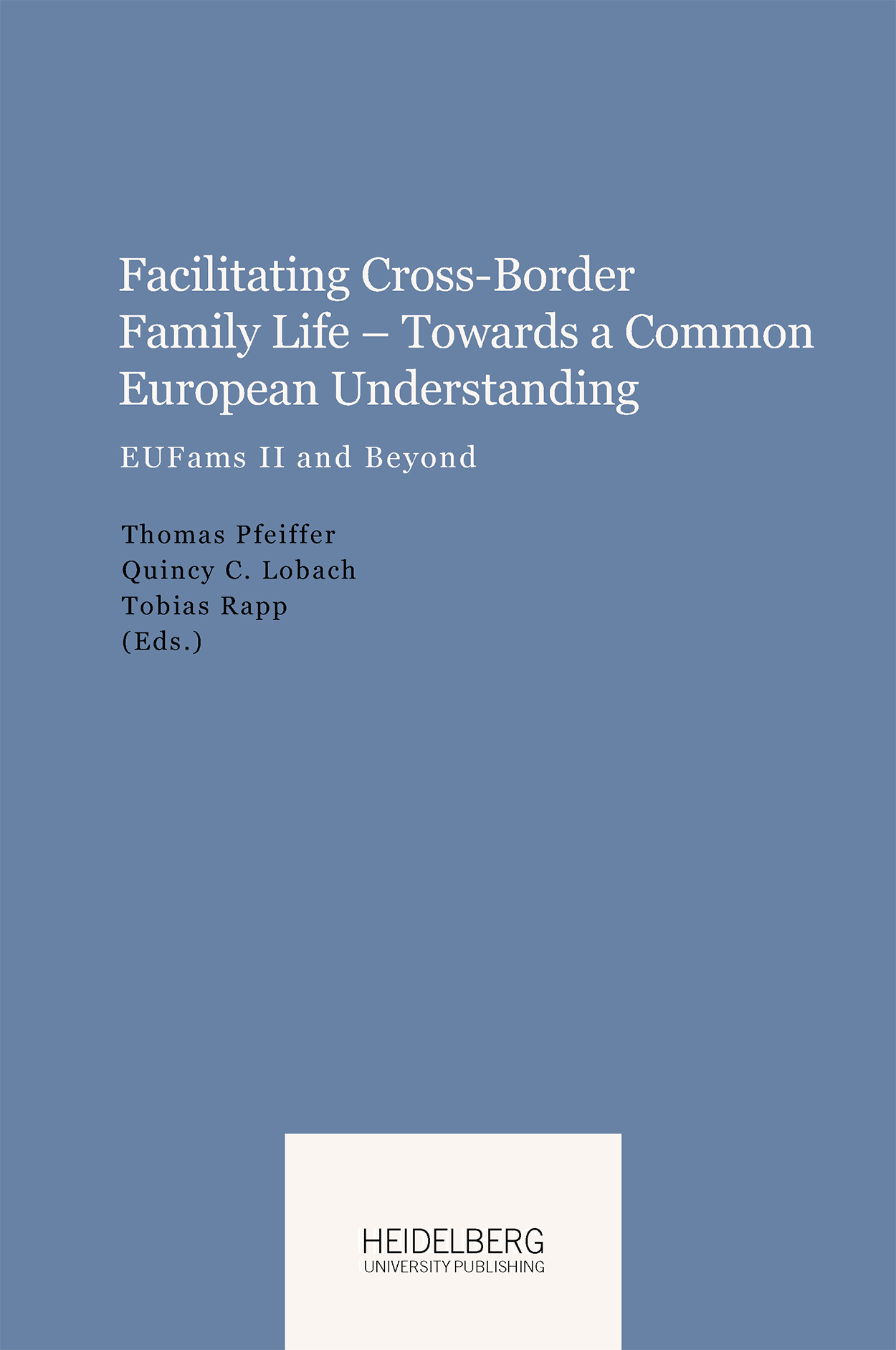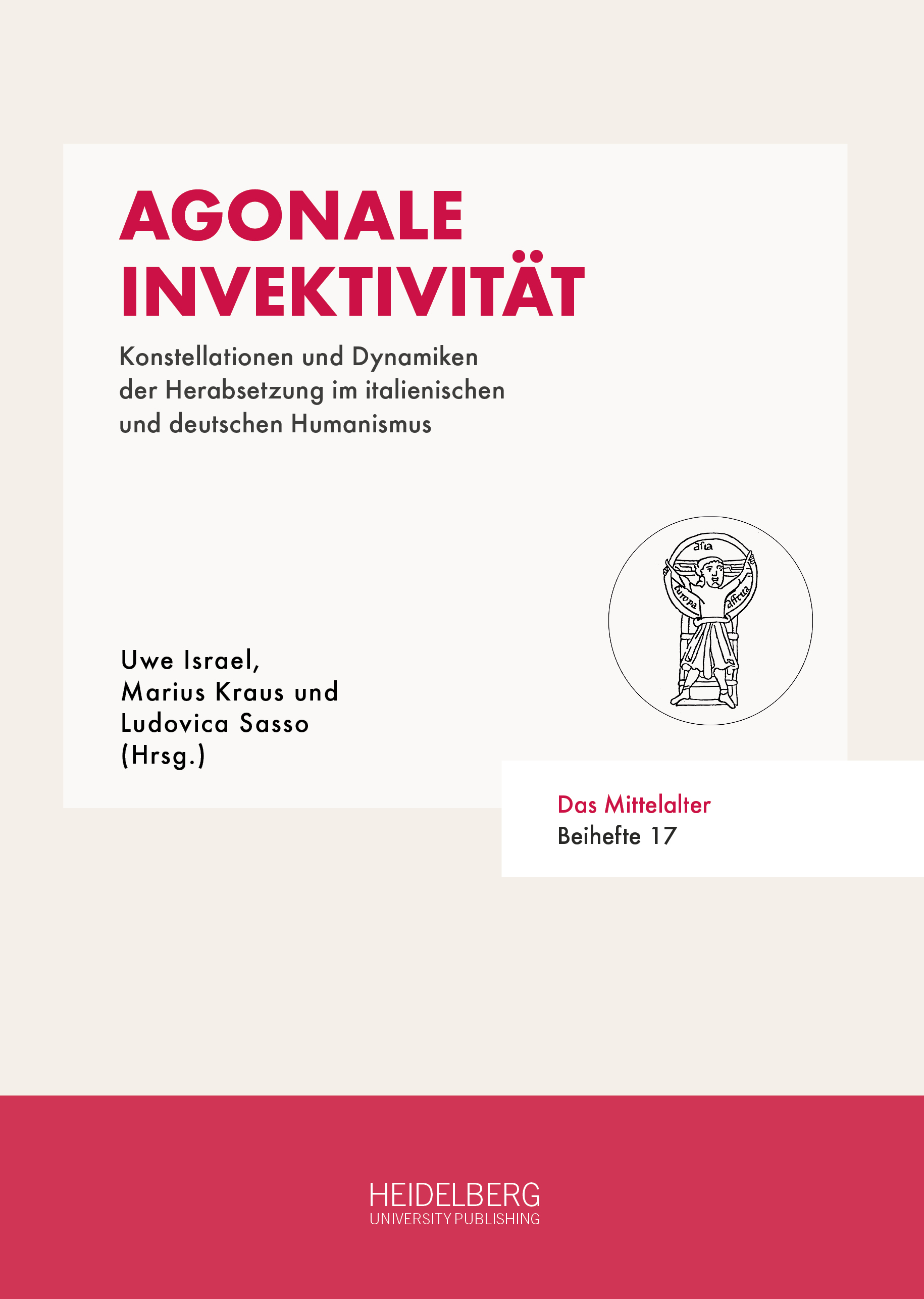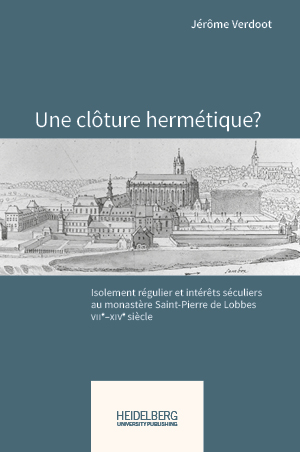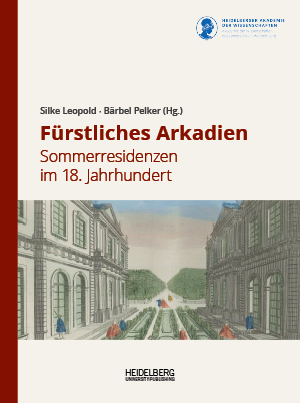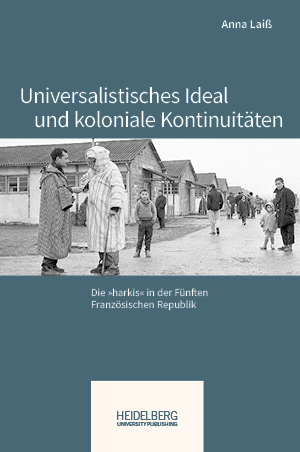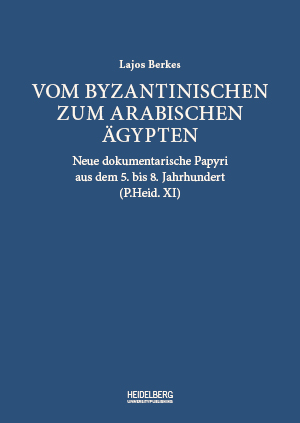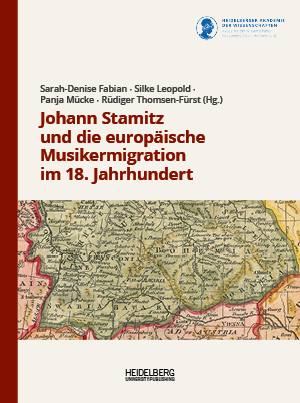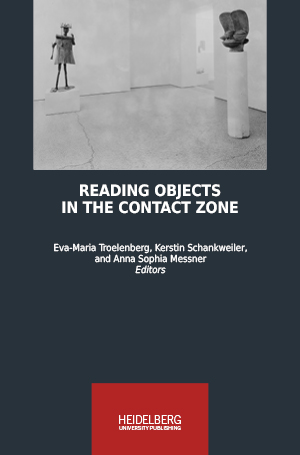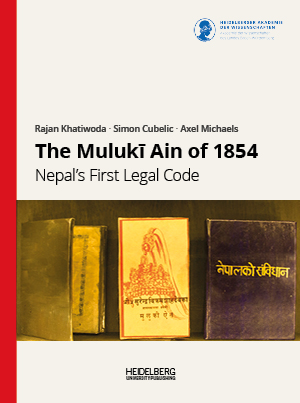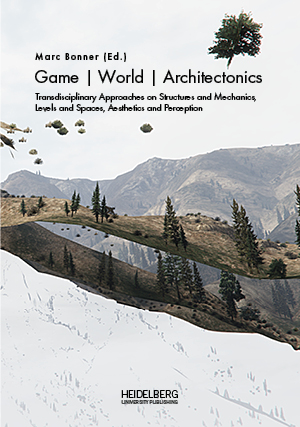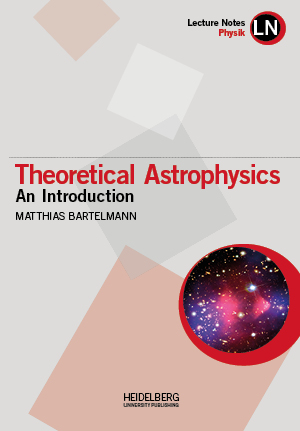Books
Reflexionsvertrauen: Eine Festschrift zu Ehren von Klaus Tanner
As a commemorative publication for the long-standing Heidelberg professor of Systematic Theology (Ethics), Prof. Dr. Klaus Tanner, this volume brings together contributions from colleagues, students and close companions. The volume takes a multifaceted look at the fundamental themes of Klaus Tanner's research and teaching. Overall, the outline of a theological ethics emerges that relies specifically on the trustworthiness of reflection.
Künstlersignatur und Artefakt: Schriften, Materialien, Praktiken aus transkultureller Perspektive. 6. Jh. v. Chr. bis 15. Jh. n. Chr.
In the extensive research on artists' signatures, little attention has been paid to their material, topological, and praxeological dimensions. This volume proposes a shift in focus from the texts themselves to how their effects and practices relate to the category of presence. It examines the cross-cultural relationships between text, writing, material, technique, and image, as well as the sacred and profane activities in which signed artifacts were involved. The unique potential of signatures becomes clear in the way they assert presence: they can invite contemplation and use and can combine this with self-reflection and interaction, often playing with the viewer, not least by addressing the materials and techniques that give the artefact its appearance.
Environments, Resources, and Infrastructures Between Russia and the Asia-Pacific
The volume brings together interdisciplinary studies of the environments, resource policies, and infrastructures in the North Pacific, spanning the eighteenth century to the present. From early colonial encounters to post-Soviet transnational cooperation, from hunting and whaling to oil and gas extraction, from imperial conservation to climate change, this collection offers new perspectives to the histories of a region increasingly important to global ecological and strategic debates.
»Émigrés« an der Grenze: Flucht, Exil und Migrationsregime in Frankreich und Westeuropa im Zeitalter der Revolutionen 1789–1815
Dans le chaos de la Révolution française de 1789, plusieurs milliers de personnes décident de fuir vers les pays limitrophes. Qui étaient ces réfugiés, mis au ban par les révolutionnaires sous le nom d’émigrés? Comment ont-ils réussi à franchir la frontière et à survivre à l’exil? Quels moyens la France et les pays voisins ont-ils mis en œuvre pour contrôler la mobilité de ces populations? Jort Blazejewski retrace les motifs, le déroulement et les manifestations de cette migration violente à l’aide de nombreuses sources. Cette étude ouvre de nouvelles perspectives sur l’un des plus grands mouvements de fuite de l’époque pré-moderne et révèle des phénomènes de crise inconnus de l’ère révolutionnaire européenne.
In the chaos of the violent upheaval of 1789, tens of thousands of people decided to flee to neighbouring countries. Who were these refugees, ostracised by the revolutionaries as émigrés? How did they manage to cross the border and survive their exile? What means did France and its neighbouring states use to control mobility? Jort Blazejewski traces the motives, processes and manifestations of this forced migration using numerous sources. The study opens up new perspectives on one of the largest refugee movements of pre-modern times and uncovers unknown crisis phenomena of the European revolutionary era.
Contested Solidarities: Agency and Victimhood in Anglophone Literatures and Cultures
This volume responds to the multiple forms of oppression and their manifold casualties in the Global South, without taking recourse to a preemptive normativity promising instant identification of victims and perpetrators. It explores critical, self-reflexive, and disenchanted rather than organic, blanket, or mesmerized forms of solidarity. It further investigates literature and culture beyond habitual victimological frameworks as sites of unruly, unexpected, and unpredictable agency. The edited collection of essays provides impressive examples of such work engaging with a wide array of narrative forms—from novels, short fiction, life writing, and poetry to performance, documentary, film, and museum exhibitions—cutting across an equally wide array of contexts ranging from Cameroon, Ethiopia, Ghana, and India to Kenya, the Middle East, Poland, Sri Lanka, South Africa, the UK, the USA, and Zimbabwe.
Process Evaluation of Interventions in Healthcare: An Introduction to Concepts, Methods, and Practices
Process evaluation is research that describes and explores the processes that influence the outcomes of interventions. In health care, many interventions aim at improving the health of patients and populations, or at implementing desired practices by healthcare providers. Process evaluation concerns the uptake of interventions, their active components, and the determinants of their outcomes. The findings of process evaluation help to interpret interventions’ effectiveness, optimize intervention design and delivery, and assess the transferability of interventions across settings. This book provides a concise introduction to the concepts, methods and practices of process evaluation in healthcare settings.
»Ernsthafte Genauigkeit und ehrende Strenge«: Musikkritik und -analyse um 1800
This study examines musical analyses in German-language music journals from the 1760s to the 1820s with regard to their journalistic and theoretical context. Like hardly any other format of the time, these texts bundle the many facets of thinking about music: aesthetics, theory and the history of music are related to each other in many reviews of works, linked and illustrated by analysis as a tool of demonstration. Thus, these texts are not only distillations of musical discourses of the time, but also provide information about an important phase in the history of musical analysis and interpretation.
Science, Culture, and Postcolonial Narratives
From climate change to global pandemics, some of the most vexing questions facing postcolonial societies are entangled with the contradictory role of science in postcolonial contexts. Science is connected to histories of colonial oppression but also to promises of improvement and emancipation; it may be the cause of environmental degradation but also its remedy. This volume engages with the cultural imagination of science and problematises the role of narrative at the intersection of culture and the sciences. Bridging postcolonial studies, literature and science studies, and other traditions, the contributors examine cultural narratives as well as texts from 19th-century utopianism to postcolonial 'science novels' and contemporary science fiction.
Exultet in Material und Raum: Süditalienische Exultet-Rollen als raumkonstituierende Medien
Exultet iam angelica turba coelorum! – Rejoice, choirs of angels! – these words mark the beginning of the Easter Proclamation; its opening word, Exultet, gave its name to the manuscripts in which the proclamation was recorded as a central part of the Easter liturgy. The Exultet rolls, which originated between the 10th and 14th centuries, mainly in Apulia and Campania, combine writing, images and musical notation in a unique way.
This book is the first to examine the material and media characteristics of the rolls from an interdisciplinary perspective, focusing not only on the objects themselves, but also on their use and perception in the Beneventan liturgy. It shows the extent to which the rolls contributed visually, aurally and olfactorily to the constitution of liturgical and social spaces.
Negotiating States of Mind: The Transformation of Psychiatric Knowledge in Imperial Germany and Meiji Japan
Negotiating States of Mind examines melancholia's demise as a scientific concept, tracing the conceptual changes that transformed psychiatric thinking in the late nineteenth century. Focusing on Meiji Japan's adaptation of European psychiatric concepts and diagnostic practices, this global intellectual history highlights how social hierarchies, institutional pressures, and quantitative methods shaped our understanding of mental illness. Through detailed case studies of mentally impaired soldiers from the Russo-Japanese War (1904-05), it investigates the impact of diagnostic changes on disability pension decisions, revealing real-world effects of conceptual change.
Diesseits und jenseits der Nation: Deutsch-französische Verflechtungen 1815-1870
Le XIXe siècle est souvent considéré comme une époque de profondes transformations. En Allemagne et en France, la période de 1815 à 1870 est marquée par des évolutions politiques, sociales et culturelles diverses, liées au processus de formation nationale. L’ouvrage ne suit toutefois pas les trajectoires nationales en tant que telles. Il s’attache plutôt, dans une perspective d’histoire croisée, aux interconnexions transnationales qui ont façonné réciproquement la France et l’Allemagne. Il montre comment ces dynamiques se sont déployées à plusieurs niveaux – politique, économique, éducatif, scientifique, médiatique, associatif et artistique. Des phénomènes pré- et postnationaux sont également pris en compte. L’ensemble propose ainsi une lecture nuancée du siècle qui élargit et relativise les conceptions établies de „l’invention de la nation“.
The 19th century is widely regarded as an era of profound transformation. In both Germany and France, the period between 1815 and 1870 was shaped by diverse political, social, and cultural developments associated with the process of nation-building. This volume, however, does not limit itself to national narratives. Rather, adopting the approach of histoire croisée, it investigates the transnational entanglements that mutually influenced France and Germany. It demonstrates how these dynamics played out across multiple domains—from politics and economics to education, science, media, civil society, and the arts. The volume also considers pre-national and post-national trajectories. The resulting analysis offers a nuanced perspective that both expands and critically reframes prevailing conceptions of the “invention of the nation".
Economies of the Edge: Frontier Zone Processes at Regional, Imperial, and Global Scales (300 BCE–300 CE)
This volume offers a new perspective on trans-Eurasian connectivity between 300 BCE and 300 CE. It focuses on border regions as key sites of economic interaction and transformation. Beyond classic center-periphery models and static notions of ‘Silk Road’ routes, the contributions examine how imperial expansion, regional political economies and decentralised trade networks shaped long-distance trade. Archaeological, textual and numismatic case studies reveal border regions as dynamic spaces of innovation, negotiation and interregional entanglements.
Caesarius von Heisterbach: Libri VIII miraculorum – Die „Acht Wunderbücher“: Auswertung, Edition, Übersetzung und Kommentar
The Cistercian Caesarius of Heisterbach (ca. 1180-1240) is one of the most renowned authors of the Middle Ages. His 'Eight Books of Miracles' (Libri VIII miraculorum) are a collection of instructional, edifying and deterrent narratives, encompassing tales of saints and demons, of humans and animals, of minor miracles and major misfortunes. Through his narratives, Caesarius transports his audience on a journey from the Rhineland to the Baltic and to Jerusalem, offering a multifaceted depiction of the political, social and religious developments in the 13th century.
The new edition of the 'Eight Books of Miracles' comprises an annotated version of the Latin text, a new German translation, and an analysis of the work and its manuscript tradition.
Images, Gestures, Voices, Lives. What Can We Learn from Paleolithic Art?
The concept of ‘Palaeolithic art’ and its study have changed considerably in recent decades. The modern notion of ‘art’ is cross-culturally and diachronically problematic. The phenomenon cannot be reduced to material visual culture, but also has acoustic, haptic and other dynamic aspects. It must be understood as a variety of processes that can encompass both the everyday and the extraordinary. In this volume, archaeologists, philosophers and anthropologists approach ‘Palaeolithic art’ from different perspectives, including its conceptualisation, aesthetics, relations to art history and art brut. The contributions deal with the challenge of materiality, evolutionary aspects, physical re-enactment by actors, digital technologies as a means of interpreting art objects, and the protection of cultural heritage. The volume offers innovative insights into past practices and contemporary ideas and approaches related to Palaeolithic art, based on careful empirical research combined with reflective and sophisticated theoretical approaches.
Welt-Wissen und kartografische Repräsentation: Arabisch-islamische und lateinisch-christliche Verflechtungen
This interdisciplinary study explores the controversially discussed question of whether and how geographical and cultural knowledge from the Arab-Islamic world was utilised by European mapmakers. The contextual analysis of cartographic representations – from diagrammatic maps of the three known continents and the seven climes to detailed world maps and Portolan charts – as well as accompanying source texts from the 10th to the beginning of the 15th century demonstrates the complex dynamics of the transmission of knowledge, which was neither linear nor continuous. Following the spatial turn, maps are understood as hybrid, socio-cultural cultural sources that conceptualise space and transmit cultural world views, which were used to pursue a variety of interests.
Komplexität und Problemlösen: Festschrift für Joachim Funke zum 70. Geburtstag
Complexity and problem-solving have become meaningful keywords for research in the cognitive sciences in recent decades. Joachim Funke's psychological approach is closely linked to both terms. His reasoning on complex problem-solving connects different lines of research, such as psychology of action, systems theory, and the computational theory of problem-solving. This volume brings together a wide range of contributions from this field, including biographical commentaries, academic essays, and original contributions.
Il Regno di Sicilia e i suoi confini.: Gli spazi frontalieri nel Mezzogiorno medievale
Sotto l’etichetta “confine” si può includere un ampio spettro di fenomeni: limiti geografici, delimitazioni politiche, aree di controllo militare e zone porose di interazione. Questo volume adotta un focus interdisciplinare sullo spazio di confine come luogo di contatto e contrasto, un’area di scambio pacifico e violento e di mobilità di idee e persone dove gli attori sociali impiegano lo spazio come elemento strutturale di organizzazione o adattamento della loro esistenza. Questo libro esamina il caso del Mezzogiorno tra l’XI e il XV secolo ed esplora la storia istituzionale dello spazio della frontiera terrestre e le dinamiche relative alla frontiera marittima e le sue implicazioni commerciali, politiche e sociali.
The label “border” can encompass a wide range of phenomena: geographical limits, political boundaries, areas under military control, and porous zones of interaction. This volume takes an interdisciplinary approach, viewing the border space as a place of contact and contrast, an area of both peaceful and violent exchange, of mobility of ideas and people, a structural element deployed by social actors to organise or adapt their own existence. The book examines the case of southern Italy (Mezzogiorno) between the 11th and 15th centuries, exploring the institutional history of land and sea border dynamics, and related commercial, political and social implications.
Die Kunst im Umfeld Herzog Ludwigs des Reichen von Niederbayern (1450-1479): Künstlerische Innovation und Intellektualisierung als Ergebnis der Rezeption der italienischen Frührenaissance
The court of Duke Louis IX of Bavaria-Landshut (reigned 1450-1479) was one of the most influential and dazzling courts of its time. Not least because of the Landshut wedding in 1475, it is still known today. Against the backdrop of humanist discourses, this book analyses selected architecture and works of art that were created at the court of Louis IX and in his circle. The focus of the analysis is on the transfer of these discourses and their artistic realisation. Using the example of the three core themes of humanism – the discovery of the individual, landscape, and history – it is shown how humanist discourses travelled from the university towns of northern Italy to Landshut through so-called learned councils and were reflected in art there.
Electrodynamics: Charges, Fields, Relativity and Geometry
Electrodynamics is a cornerstone of every modern education in theoretical physics, as it introduces a geometric picture of the laws of Nature, and is permeated by relativity. Starting from the fundamental phenomenology of Maxwell’s equations, the script treats the construction of Green-functions for solving potential problems, before moving to the dynamics of the electromagnetic field and the Poynting-theorems. Retardation bridges to the notion of light cones and the emergence of relativity, leading to a covariant formulation of Maxwell’s equations. Gauge transformations are treated in detail, as well as the behaviour of Maxwell’s equation under discrete symmetries.
Statistical Physics: Linking the Microscopic with the Macroscopic World
Statistical physics provides the microscopic theory for thermodynamic macroscopic properties of a physical system. These lecture notes introduce the necessary concepts of statistics and analytical mechanics for equilibrium thermodynamics with partition functions. They cover classical and quantum statistics, and treat advanced topics such as Langevin dynamics, the Fokker-Planck equation and phase transitions. Many systems like ideal classical and relativistic gases are worked out in detail.
First version under https://doi.org/10.17885/heiup.1058
Prediger der Transformation: Alain von Lille und die Pariser Schulen in der zweiten Hälfte des 12. Jahrhunderts
Vers 1200, une nouvelle institution d’enseignement et d’apprentissage voit le jour à Paris: l’Université. Mais qu’est-ce qui a motivé les maîtres à se regrouper en une communauté et à réglementer leur activité? Un personnage jusqu’ici sous-estimé dans ce processus de transformation fut Alain de Lille, dont l’œuvre de prédication est ici évaluée pour la première fois de manière complète dans ce contexte. Contrairement à l’idée qui a longtemps prévalu, il n’était pas le savant vieillissant qui déplorait la fin de l’érudition. Au contraire, il a tenté de stabiliser les communautés scolaires en mutation en les engageant sur des objectifs, des méthodes et des valeurs communs.
Around 1200, a new institution of teaching and learning emerged in Paris: the university. But how was it possible that teachers came together to form a community and regulate their activities? A hitherto underestimated agent in this transformation process was the master Alan of Lille, whose preaching work is comprehensively analysed here for the first time against this background. Contrary to what has long been assumed, he was not an ageing scholar who lamented the end of old learning. Rather, he attempted to stabilise the changing school communities by committing them to common goals, methods and values.
Florentine Banks in Germany: The Market Strategies of the Alberti, Medici, and Spinelli, 1400–1475
"Florentine Banks in Germany" offers a thorough examination of the market strategies employed by the influential Florentine banking families Alberti, Medici, and Spinelli from 1400 to 1475. Kurt Weissen reveals how these powerful merchants navigated the challenges and opportunities of the German market, facilitating key financial transfers between Germany and the Roman Curia. By leveraging advanced banking practices and building extensive networks across Europe, they played a crucial role in shaping medieval trade and finance, leaving a lasting impact on the development of economic systems in the early modern period, particularly within the realms of commerce and banking.
The volume is also available in a German-language version https://doi.org/10.17885/heiup.675
Bilder von Überresten: Eine visuelle Gedächtnisgeschichte des Mittelalters im Frankreich der Neuzeit und Moderne
Only vestiges of the Middle Ages remain. They embody a period that has been assigned a wide range of historical, political and cultural meanings in modern and contemporary times. In addition to texts, images have also contributed to this. Material relics from sword pommels to cathedrals are presented to us in visual representations of printmaking, photography or book illustration. Through the transformation processes of targeted artistic appropriation and media transfer, not only the remains themselves take shape, but also the ways of seeing and understanding the past. The book traces this connection using the example of France, from the graphic arts of the late sixteenth century to the computer simulation of the early twenty-first century. It sketches a visual history of memory of the Middle Ages at the intersection of art history and history.
Die Münchner Residenz als kommentierte 3D-Rekonstruktion: Eine Analyse der räumlichen und funktionalen Entwicklung im Gefüge der Stadt zwischen 1467 und 1614
This study provides a new synthesis of the architectural history of the Munich Residence and its urban environment from the mid-fifteenth century to the eve of the Thirty Years’ War. It is primarily based on a systematic and comprehensive analysis of written and visual sources, combined with the existing architectural structure. Additionally, it incorporates new methods of digital art history, including annotated and source-critical 3D reconstructions of selected building periods.
Im Geisteskampf: Der Verlag Philipp Reclam jun. 1933–1945
As a publishing house committed to ideals of Bildungsbürgertum and firmly anchored in national education and schooling, Philipp Reclam jun. plays a prominent role in the formation of public opinion and in socio-political discourse. In addition to examining the economic development and entrepreneurial activities of the publisher, the systematic analysis of the publishing program in particular sheds light on the positioning and position of Reclam in the cultural system of National Socialism. At the intersection of media and contemporary history, book science and publishing studies, the research combines historical-hermeneutic and social science methods.
Being Single in the City: Cultural Geographies of Gendered Urban Space in Asia
What does it mean to be a single woman in India or China? Being single is an advancing trend, also in Asia. There is an ambivalent fascination with the single woman as a new type of empowered, pleasure-seeking, competent lifestyle-surfer, and dedicated career-maker. And yet, the single woman is also stigmatized and isolated, discriminated against or stereotyped as someone who challenges social norms. Place matters for singlehood. This book focuses on the urban fabric of India, mainland China, and Hong Kong. For it is here that social, economic, cultural, and political transformations become manifest and new possibilities of living are tested and vividly contested.
„Stets korrekt und human“: Der Umgang der westdeutschen Justiz mit dem NS-Völkermord an den Sinti und Roma
This book deals with a neglected area of the judicial reappraisal of the Nazi regime: the handling of the crimes against the Central and Eastern European Roma minority in West German NSG trials. It provides a comprehensive insight and overview, informs about the legal prerequisites of the West German judicial special path, and presents the course of proceedings and the roles of the defendants, witnesses and judicial personnel for a number of proceedings. The focus is on the joint trial on the “Zigeunerkomplex” (“Gypsy Complex”, 1958–1970), which was planned as a major trial alongside the first Auschwitz trial and which, contrary to its goal, had little impact and is now forgotten.
Digitising Heritage: Transoceanic Connections between Australia and Europe
‘Digitising Heritage’ presents new interdisciplinary studies about the diverse manifestations of heritage in digital form, in museums, academic institutions, politics, and history. Individual contributions span across literary studies, forensics, physics, sound studies, law, postcolonial studies, archaeology, migration and museum studies. How can researchers and practitioners make effective use of digital technologies to foster a sustainable heritage engagement? To what extend can critical heritage concepts find expression in the digital age? The volume answers these questions in a multimedia format that combines audio, video, 3D graphics and technologies.
Counterstrategies to the Antigypsy Gaze
Countering antigypsyism in film is the problem field which this edited collection inaugurates. The aim is to shift the focus from antigypsyism critique and open up alongside it a new set of discussions about the artistic counterstrategies to antigypsyism, highlighting the need for intertextual, transcultural, and transmedial approaches in the analysis. The contributions foreground the applicability of the research findings and provide a broad range of examples, which may be useful to filmmakers and professionals from the film industry.
The volume documents the case studies presented at the international workshop “Artistic Alternatives to the Antigypsy Gaze” held in Heidelberg in 2021.
Die kognitive Perspektive: Wie Menschen über die Welt sprechen. Festschrift zu Ehren von Christiane von Stutterheim
Christiane von Stutterheim's scientific work ranges from language typology to sentence and text production, to questions of second and foreign language acquisition. Her particular contribution lies in emphasizing linguistics as an important contributor to cognitive science. The Festschrift attempts to reflect the breadth of Christiane von Stutterheim's research activities.
Lords of the Mountains: Pre-Islamic Heritage along the Upper Indus in Pakistan
With his authoritative monograph, Lords of the Mountains. Pre-Islamic Heritage along the Upper Indus in Pakistan, Harald Hauptmann brought decades of research in the Karakoram region of northern Pakistan to an impressive conclusion. In a sense, this book (completed before his sudden death in 2018) is the scientific legacy of the last phase of his career. The book was edited by Luca M. Olivieri of Ca’ Foscari University of Venice, head of the ISMEO and Ca’ Foscari’s Italian Archaeological Mission in Pakistan.
(after the foreword by H. Parzinger)
Digital Stylistics in Romance Studies and Beyond
Digital Stylistics is an area of research at the intersection of Literary Studies, Linguistics, Digital Humanities, and Computational Literary Studies. It is concerned with the computational and statistical analysis of literary style and of style in language use. This volume brings together research in Digital Stylistics from Romance Studies and beyond, contributing to new methods and applications in different language contexts and literatures. All the research results are based on the empirical, computational analysis of literary corpora chosen to analyze major genres or subgenres of poetry, drama, and prose from the nineteenth to the twenty-first century.
Ernst Kurth und Sergej Taneev: Philosophie linearer Satztechniken zu Beginn des 20. Jahrhunderts und ihre Auswirkungen auf zeitgenössische Kompositionen
The emergence of Linearity at the beginning of the 20th century represents a remarkable but yet rarely dealt with phenomenon in music history. Two main protagonists of the time were Ernst Kurth (Bern) and Sergei Taneev (Moscow), whose counterpoint theories formed the basis for the work of numerous musicians of the time. Although concerning the same subject, both theories show fundamental differences, in music-theoretical as well as in music-aesthetic respect. It turns out that these different philosophies are reflected in numerous works by composers such as Ernst Křenek, Artur Schnabel, Alexander Scriabin and Nikolaj Metner.
L'agir en Grèce ancienne: Une étude de cas franco-allemande sur Bruno Snell et Jean-Pierre Vernant
Quel rapport entre l’Antiquité grecque et le monde d’aujourd’hui? Quelles relations entre les analyses académiques d’un chercheur, ses convictions et sa vie dans la cité? Entre une réflexion sur la manière dont les personnages d’Homère et de la tragédie grecque, perçus comme parangons de l’»homme grec«, prennent des décisions à des moments cruciaux et l’engagement d’intellectuels pendant la Seconde Guerre mondiale en France et en Allemagne? Entre Bruno Snell, philologue allemand, nourri d’idéalisme winckelmannien et d’une pratique scientifique héritée de Wilamowitz, et Jean-Pierre Vernant, philosophe et anthropologue marxiste français? Ce livre montre en nuances comment ces domaines et ces personnes qui semblent éloignés les uns des autres se rencontrent, se reflètent et se répondent.
What is the relationship between Greek antiquity and today's world? What is the connection between the academic analyses of a researcher, his convictions and his life as a citizen? Between a reflection on the way in which the characters of Homer and Greek tragedy make decisions at crucial moments, and the engagement of intellectuals during the Second World War in France and Germany? Between Bruno Snell, a German Greek scholar steeped in Winckelmannian idealism and a scientific practice inherited from Wilamowitz, and Jean-Pierre Vernant, a French Marxist anthropologist and philosopher? This book shows in nuance how these seemingly distant fields meet, reflect and respond to each other.
Religion, Recht und Säkularisierung in der Frühen Neuzeit: Zur kulturellen Signatur der westlichen Christenheit
The stimulating polarity of religion and law has determined the history of Christianity from the very beginning. In the Middle Ages, it is associated with the struggle between spiritual and secular power and, since the Reformation, with the dispute between the emerging denominations. Not least because of this, there is a constant interplay between secularizing tendencies and efforts to intensify religion. Both have an effect on the development of the law, often catalytically reinforcing or accelerating it, in some situations even providing a stimulus, but sometimes also inhibiting it. In the coexistence of these polarities, the peculiarity of Western Christianity becomes visible.
Emperor and God: Passion Relics and the Divinisation of Byzantine Rulers, 944–1204
This study explores how the understanding of the Byzantine emperor as a sacred or divine figure changed in the Middle Byzantine period. It is based on close readings and studies of three medieval Passion relics held in Constantinople: the Mandylion, the relic-reliquary ensemble of the Limburg Staurotheke; and the Holy Stone. Accompanied by English-language translations of medieval Greek source texts pertaining to these relics, Sprecher demonstrates that the Passion relics in this period served to focus and narrow an understanding of the emperor not only as divinely appointed and anointed ruler, but also in surprising ways as being somehow divine himself.
Menschen in ihrer Gegenwart: Die Fülle spätmittelalterlichen Lebens im Spiegel der Apostolischen Pönitentiarie
Questa raccolta di saggi, frutti di ricerche svolte da Arnold Esch e Ludwig Schmugge nell’arco di oltre trent’anni, esplora le fonti provenienti dall’archivio della Penitenzieria apostolica, il supremo tribunale della Chiesa cattolica in materia di indulgenze e dispense. Più precisamente, si tratta dei registri di tutte le suppliche che, arrivate da tutto il mondo della cristianità latina, vennero accolte positivamente. Che tipo di fonti sono e perché andrebbero studiate? Come sono state scoperte e rese accessibili alla ricerca? Quali nuove prospettive si aprono attraverso la loro analisi? Dalle risposte dei due autori si possono trarre interessanti suggerimenti.
This volume of selected essays by Arnold Esch and Ludwig Schmugge, the fruit of over thirty years of research, deals with sources from the archives of the Apostolic Penitentiary, the Catholic Church’s supreme tribunal of penitence and mercy – more precisely, with the registers that this ‚dicastery‘ kept on petitions from all regions of Latin Christendom, which were positively decided upon by it. What new perspectives does their analysis open up? The contributions by both authors provide answers and suggestions to these questions.
Stadtgeschichte(n): Stadt und Kultur in Mittelalter und Früher Neuzeit
The title 'Medieval urban history/stories' evokes the dual meaning of the word as an event and as a narrative. On the one hand, it is about the event itself, and on the other, about what is reported and narrated about this event, i.e. urban historiography and the literature produced in the city. This anthology brings together contributions that examine the representation of the city in literature, art and historiography as well as a specifically urban culture in the Middle Ages and early modern period. To this end, sources are selected from the extensive corpus in which topography and institutions, buildings and inhabitants are explicitly addressed and become the subject of narration, praise and historical representation. The aim is to combine older approaches to social history with more recent ones, such as imagological approaches.
Baden-Baden, Sommerhauptstadt Europas: Eine deutsch-französische Beziehungsgeschichte, 1840–1870
Entre le milieu des années 1840 et la guerre franco-prussienne de 1870–1871, la ville thermale de Baden-Baden s’est imposée comme la première destination à la mode en Europe et comme un carrefour interculturel majeur. L’influence française particulièrement marquée a valu à la ville, des deux côtés du Rhin, la réputation de » colonie française « et de » filiale de Paris «, même si cela a été interprété de manières différentes. Eva Zimmermann se penche sur l’évolution de ce lieu unique quant aux relations culturelles franco-allemandes dans un contexte de tensions entre cosmopolitisme et nationalisme croissant. Elle analyse les multiples facteurs qui ont contribué à l’émergence de la »capitale d’été de l’Europe« et identifie les phénomènes et les limites des échanges et des transferts culturels qui ont façonné l’ensemble de l’expérience thermale.
Between the mid-1840s and the Franco-Prussian War of 1870/71, the spa town of Baden-Baden emerged as Europe's leading fashion destination and a significant intercultural hub. On both sides of the Rhine, the city gained a reputation as a “French colony” and a “branch of Paris”, albeit with varying connotations. Eva Zimmermann delves into the development of this unique site of German-French cultural relations amidst the dynamics of cosmopolitanism and growing nationalism. She analyzes the diverse factors that contributed to the emergence of the “Summer Capital of Europe” and identifies phenomena and limitations of exchange and cultural transfers that shaped the entire spa experience.
Antiziganismus im baden-württembergischen Staatsapparat 1945–1970
Even after 1945, Sinti and Roma were confronted with marginalisation and discrimination, as antigypsyist prejudice structures continued to guide action, especially at state level. This study examines the state apparatus in Baden-Württemberg and its minority policy up to the 1970s, addressing three main topics (compensation, legislation and the legal punishment of National Socialist crimes of violence). The focus is on how the authorities dealt with the survivors of the Sinti and Roma and their perspective on their experiences of state persecution and extermination under National Socialism.
Die Räume der Witwe: Architektur und Funktion fürstlicher Witwensitze in der Frühen Neuzeit, 1450–1650
Dowagers played an active role in politics and culture at the courts of the Holy Roman Empire. They were mothers, advisers and patrons of the arts. The rulers had to provide them with an appropriate dowry and a residence. For the first time, the book describes the architecture and the ceremonial use of dower residences from the 15th to the 17th century from an art historical point of view. Focusing on functional changes and conversion of the castles, the author shows how the dowagers expressed their new independence in an architectural and spatial way.
Homicide Law in 19th-Century Nepal: A Study of the Mulukī Ains and Legal Documents
The main ambition of this book lies in a detailed analysis of the formation and enforcement of Nepal’s Mulukī Ain of 1854, specifically focusing on the provisions regarding homicide within the Mulukī Ains of 1854 and 1870. This study also examines contemporaneous legal records, revealing the complexities of the Ain’s implementation. The articles on homicide serve as a microcosm illustrating the broader evolution of Nepal’s legal code, which departed from outdated punishments like genital mutilation and introduced fines and imprisonment instead. Still, the innovations introduced into the Ain of 1854 were not uniformly progressive. The Ain in its various stages of development thus showcases the complex ways in which legal systems inevitably undergo transformation.
Pforta, St. Afra, St. Augustin und die Transformation der mitteldeutschen Musiklandschaft (1543–1620)
The Albertine Prince’s Schools Pforta, St. Afra, and St. Augustin considerably contributed to the consolidation of Lutheran church music. The three schools, their teachers, and their alumni transformed Central Germany into a flourishing musical landscape. This study traces this process in detail, thus filling the musico-historical gap between the Wittenberg Reformation and the Thirty Years’ War and describing one of the most significant musical landscapes of the German-speaking lands.
Collectives, Localities, Networks: A Translocal Ethnography of Emerging Contemporary Art Field(s) in Nepal and Bangladesh
Artist collectives emerge as driving forces in the art field. They activate new spaces as locales of artistic practice and display. They shape emerging formats, from neighborhood arts projects to largescale biennials. In their practice, the artists challenge established notions of art as well as hegemonic circumscriptions of locality. This book results from a long-term engagement with artists in Nepal and Bangladesh and follows an actor-centered approach to unravel notions of contemporaneity and collectivity. Its focus on collaborative art practices together with its multi-scalar and translocal perspective urges us to rethink the use of terms such as the city, the region or the global that often transport hierarchies.
Prinzip Personifikation. Frankreichs Bilderwelt im europäischen Kontext von 1300 bis 1600: Frankreichs Bilderwelt im europäischen Kontext von 1300 bis 1600
The significance of allegorical personification as a cultural technique can hardly be overestimated for the end of the Middle Ages and the beginning of the early modern era. Particularly in the French-speaking world, this period shows a distinctive intensification.
In a consistently cross-media approach, the interweaving of images, texts, and theatrical stagings with its decisive changes is demonstrated by means of allegorical personification. The allegorical mode emerges as the dominant practice of an imagery that was subjected to a fundamental standardization only with the dissemination of Cesare Ripa's Iconologia from 1593 on. Personifications represent a largely overlooked source for explaining an image theory and practice that until then had only been developed in fragments.
Postcolonial Oceans: Contradictions, Heterogeneities, Knowledges, Materialities
This book contributes to the study of oceans, seas, coastal waters, and rivers within blue humanities by broadening, circulating, and interweaving knowledge about such waters, ocean epistemologies, and sea narratives from pluriversal epistemological, geographical, cultural, and disciplinary perspectives. The contributors from Africa, Asia, the Caribbean, Europe, North America and the Pacific explore the interconnections between oceans, coastal areas, rivers, humans, animals, plants, organisms, and landscapes in the fields of cultural history and cultural studies, critical race and postcolonial studies, marine and environmental studies, linguistics, literature, film and media studies.
Drumming in Bhaktapur: Music of the Newar People of Nepal
This groundbreaking publication offers a unique resource of information about one of the most glorious and diverse musical cultures of the Himalayas. The numerous drum traditions of Bhaktapur in the Kathmandu Valley are a vibrant aspect of traditional Newar culture that saw its heyday between the thirteenth and eighteenth centuries. The three Malla kingdoms of Bhaktapur, Lalitpur and Kathmandu competed in art, architecture, music, dance and opulent town rituals celebrating the presence of the gods. Music served as a portal between the human world and the realm of the gods.
This study documents the role and repertoires of the different percussion genres in a transcribed and commented form for practical use and as a teaching aid. It also includes a dictionary of Newari terms related to music. As it focuses on the musical life of Bhaktapur during the decade starting from 1983, it could serve as a point of reference for comparison with the present situation. This publication is an outstanding contribution to the preservation of Newar culture.
This publication includes electronic supplementary material (documentary films and audio
examples). An overview can be found on page 403.
›From the Australian Bush to the International Jungle‹: Internationale Karrieren und der Völkerbund
After World War I, membership in the League of Nations represented an important step for the British Dominions on the road to foreign policy independence. The internationalism of the League of Nations was not a purely political phenomenon, but also had a social dimension. In particular, the Geneva based Secretariat of the League of Nations evolved into a hub of liberal internationalism. Benjamin Auberer examines these networks by investigating the careers of five employees of the League of Nations from Australia and New Zealand and thus contributes to a global history of the League of Nations and its bureaucracy.
Europäischer Buchmarkt und Gelehrtenrepublik: Die transnationale Verlagsbuchhandlung Treuttel & Würtz, 1750–1850
Vers 1800, la librairie et maison d’édition Treuttel & Würtz était une plaque tournante des échanges européens. Tandis que la maison d’édition visait, avec les publications de Johann Wolfgang von Goethe ou de Germaine de Staël, un public d’élite transculturel, la librairie fournissait des clients dans toute l’Europe grâce à ses succursales à Strasbourg, à Paris et à Londres, et à son vaste réseau commercial. Pour la première fois, cette étude examine le fonctionnement et l’influence de l‘entreprise Treuttel & Würtz et les replace dans le contexte historique et culturel: de l’organisation du commerce du livre et des coopérations entre libraires à l’émergence de nouvelles disciplines académiques, comme les philologies modernes, au début du xixe siècle, en passant par l’histoire des bibliothèques. Tous ces domaines se caractérisaient par un marché transnational que Treuttel & Würtz servait d’une manière que l’on peut qualifier de littérature mondiale pratiquée.
The publishing house and bookshop Treuttel & Würtz was a hub of European exchange par excellence around 1800. While the publishing house targeted a transcultural elite audience with publications by Johann Wolfgang von Goethe or Germaine de Staël, the bookshop supplied customers throughout Europe with its branches in Strasbourg, Paris and London as well as its widely ramified trade network. For the first time, this study examines the working and influence of the publishing bookshop and embeds it in the cultural-historical context: from the organisation of the book trade and the cooperation between booksellers to library history and the emergence of new academic disciplines such as the modern philologies at the beginning of the 19th century. All these areas were characterised by a transnational market, which was served by Treuttel & Würtz in a way that can be described as practised world literature.
To Jerusalem and Beyond: Interdisciplinary Approaches to the Study of Latin Travel Literature, c.1200-1500
With the expansion of trading routes, pilgrimage, and missionary endeavours in the 13th century, Latin travel literature emerged as a distinctive genre like never before. To highlight the importance of this genre, this volume outlines and explores current and future research trajectories with a focus on Latin travel literature from c. 1200–1500. Combining digital, codicological, literary, philological, and anthropological approaches the volume analyses the ways in which these texts were produced, distributed, received, read, and how they can be interpreted. It argues for the importance of re-evaluating these texts and revisiting their contents in light of new methodological and theoretical approaches.
Russia's North Pacific: Centres and Peripheries
The series “Russia and the Asia-Pacific” explores political, economic, social, cultural and environmental interactions of the Russian Far East within its Asian-Pacific context as well as with the Russian capital in the past and present. Its first volume addresses from a multidisciplinary perspective notably the following questions: How were and are directives from a centre thousands of kilometers away perceived and implemented by actors in this region? To which extent was and is the centre successful or how did or does it fail in integrating a region as far away from the centre as the Russian Far East in its state structures? How have notions of “centre” and “periphery” changed over time?
Funerary Landscapes of the Late Antique “oecumene”: Contextualizing Epigraphic and Archeological Evidence of Mortuary Practices. Proceedings of an International Conference in Heidelberg, May 30–June 1, 2019
This volume presents the first pan-Mediterranean panorama of Late Antique mortuary practices, combining and contextualizing an abundant dataset of archaeological and epigraphic evidence. In 17 contributions, a group of international specialists discusses funerary evidence from 14 Late Antique landscapes, in order to show the high diversity of microregional and local customs in funerary cultures as well as the significance of global trends. In this volume various new methodological approaches are applied: the materiality of epitaphs and tombs, their visibility, their accessibility, their perception, their setting within shifting spatial environments, as well as their crucial role within social practices. Therefore, this book fundamentally reshapes our understanding of mortuary habits and the commemoration of the dead during the transitional phase of the Long Late Antiquity.
Old Age before Modernity: Case Studies and Methodological Perspectives, 500 BC ‒ 1700 AD
Il presente volume esamina la vecchiaia e l’invecchiamento come appaiono nelle epoche premoderne e, in particolare, nel medioevo. Combinando prospettive provenienti dalla gerontologia da una parte e dalle discipline umanistiche, in particolare la ricerca storica, dall’altra, si cerca di aprire la strada a nuove conoscenze. I contributi gerontologici propongono teorie e metodi che sono fondamentali per analizzare gli sviluppi storici, mentre quelli umanistici offrono evidenza storica attraverso casi di studio.
This book investigates old age and ageing in premodern times, with a special focus on the Middle Ages. Perspectives from gerontology and the humanities, and above all from history, are combined to provide novel insights. The gerontological articles explain key theories and methods that are relevant for the analysis of historical developments, while the contributions from the humanities offer historical evidence complementary to these inputs.
Von Aachen bis Akkon: Grenzüberschreitungen im Mittelalter. Festschrift für Hubert Houben zum 70. Geburtstag
Pubblicato in occasione del 70° compleanno di Hubert Houben, questo volume si concentra sull’oltrepassare dei confini come uno dei temi cari al festeggiato. Prendendo come punto di partenza un concetto di confine come costruzione sociale, le autrici e gli autori affrontano casi selezionati di scavalcamento di confini spaziali, culturali e legali durante il Medioevo. La complessità e la multiperspettività che ne derivano riflettono metodi e tradizioni di ricerca diversi, che insieme rivelano un ampio spettro di approcci possibili al tema dell’attraversamento dei confini.
Published on the occasion of Hubert Houben’s 70th birthday, this volume focuses on border crossings as one of the topics dear to the jubilarian. By starting from a concept of borders as a social construct, the authors look at selected cases of transcending spatial, cultural and legal boundaries in the Middle Ages. The resulting complexity and multi-perspectivity reflects different research methods and traditions, revealing a broad spectrum of possible approaches to the topic of border crossings.
Carl Stamitz (1745–1801): Biographische Beiträge – Das symphonische Werk – Thematischer Katalog der Orchesterwerke
Carl Stamitz (1745-1801), Johann Stamitz's eldest son, is well known for his works, as his compositions can be found on numerous recordings and concert programmes in today's music scene. Musicologists though do not pay the same attention to this composer, who came from the ranks of the court musicians of the Electoral Palatinate. The dissertation by Friedrich Carl Kaiser (1931-2008), submitted in 1962, is still the only monograph that systematically deals with his life and his orchestral music, which was a major part of his creative work. It is a standard work that rightly appears in every bibliography on the subject. Up to now it has only been possible to view the compulsory typescript copies of the dissertation, which are distributed among a few libraries and which differ in detail from one another. The reason for this is the somewhat unusual genesis of the text, as Kaiser repeatedly made changes and additions to his Stamitz monograph over a long period of time. The present edition, which also includes Kaiser's personal copy from his estate, now provides musicology researchers with a reliable edition of this fundamental text.
Die Wurzeln der Kontaktlinguistik: Zur Entstehung des Sprachkontaktparadigmas in der Sprachwissenschaft unter besonderer Berücksichtigung der Rolle der Romanistik
Thinking about language contact and language mixture has been part of the European-Western preoccupation with language from the very beginning. Starting with Plato in the fourth century B.C., it is for a long time an unexcited reflection, until the perspective changes radically in the 19th century: the normality is suddenly gone, contact and mixture become first a research taboo and only a little later a serious research focus, from which a separate discipline, contact linguistics, emerges. This book tells for the first time the history of the study of language contact up to the threshold of the 20th century and shows how critical-historiographical studies can help to classify and advance current debates (e.g. in creole studies).
Kosmos: Vom Umgang mit der Welt zwischen Ausdruck und Ordnung
The long history of cosmology did not simply end in the specialised discipline of the physical study of the universe. Rather, the times we live in are characterised by a "cosmological restlessness", which indicates that today central questions about the world and our position in it demand new answers. A look at the history and diversity of cosmology reveals a "form of expression" that is not limited to the function of a worldview (a picture of the world), but can pursue many other purposes and inscribes itself in complicated ways in the intellectual, theoretical, but also political, ethical and practical contexts of its time. This volume portrays this in many case studies, ranging from prehistory to present-day Earth system science.
Repräsentationen der israelischen Soldatin im Netz der Bildkulturen
Representations of female Israeli soldiers are a popular subject in photography. However, a notable controversial imparting exists concerning gender and identity: heroic depictions of female Israeli soldiers as shown by the Israeli military in their official representations are in contrast to portraits which are either sexualized or appear as a form of criticism on military service as such and the responsibility of young women soldiers towards the state and the people.
This analysis focusses on aspects of the visual language and aesthetics in the context of the cultural history discourse of Zionism, as well as on stereotypes such as the ›beautiful Jewess‹ in European painting since the 18th century. The results offer a unique contribution to Jewish studies by combining methods of gender studies and art history, as well as visual studies.
General Relativity: Geometric Structure and Dynamics of Spacetime
General relativity is the theory of the structure and dynamics of spacetime. These lecture notes provide an introduction into the concepts of differential geometry, in particular pseudo-Riemannian geometry, and discusses the ideas behind the construction of a gravitational field equation. Exact solutions to the field equation for highly symmetric spacetimes, i.e. black holes, FLRW cosmologies and gravitational waves, are worked out. Advanced topics that are covered include Lie derivatives and the Killing equation, the derivation of the field equations from variational principles, and the formulation of field theories on curved spacetimes.
Cosmology: From the Large-Scale Structure of Spacetime to Galaxy Formation
The lecture notes give an overview of modern cosmology: After introducing the necessary concepts from general relativity, the FLRW-class of cosmological models is discussed, with emphasis on dark energy. Cosmic structure formation, the necessity of dark matter and the interplay between statistics and nonlinear fluid mechanics are treated in detail. The physics behind cosmological observations that have led to the standard model of cosmology is explained, in particular supernovae, the cosmic microwave background and gravitational lensing.
Statistical Physics: Linking the Microscopic with the Macroscopic World
Statistical physics provides the microscopic theory for thermodynamic macroscopic properties of a physical system. These lecture notes introduce the necessary concepts of statistics and analytical mechanics for equilibrium thermodynamics with partition functions. They cover classical and quantum statistics, and treat advanced topics such as Langevin dynamics, the Fokker-Planck equation and phase transitions. Many systems like ideal classical and relativistic gases are worked out in detail.
2nd version under https://doi.org/10.17885/heiup.1518
Tooltips for Theoretical Physics: Concepts of Modern Theoretical Physics, Scales and Mathematical Tools
Theoretical physics is commonly taught in separate lectures, illustrating the physics behind the great constants of Nature: Electrodynamics and the speed of light, quantum mechanics and Planck’s constant, thermodynamics and Boltzmann’s constant, and finally relativity with Newton’s constant as well as the cosmological constant. In these lecture notes, the concepts of theoretical physics are illustrated with their commonalities, and phenomena are traced back to their origin in fundamental concepts.
Französische Lebenswelten in der Residenz: Akteure, Räume und Modalitäten französisch-sächsischer Verflechtung im augusteischen Dresden, 1694‒1763
À l’époque augustéenne (1694–1763), la ville de Dresde, résidence saxonne, devient un centre culturel du Saint-Empire. De nouveaux réseaux de personnes et de nouvelles voies commerciales mettent en place des transferts de connaissances, parmi lesquels les liens avec la France jouent un rôle prépondérant. Cette étude se penche donc sur le grand nombre de Françaises et de Français qui, à cette époque, séjournent dans la capitale saxonne pour des périodes plus ou moins longues. Les conditions préalables en France, les modalités sociales et enfin l’action française à la cour et dans la ville sont examinées à l’aide de nombreuses sources issues d’archives françaises et allemandes. Il en résulte un portrait centré sur les acteurs et à multiples facettes du transfert culturel franco-saxon.
In the Augustan era (1694–1763), the Saxon residence city of Dresden developed into a cultural centre of the Holy Roman Empire. New networks and trade routes set knowledge transfers in motion, with connections to France taking on a prominent role. This study therefore focuses on the large number of French people who came to the Saxon capital for short or long periods of time. The study includes an examination of the French prerequisites of these journeys, the social modalities and finally the French activities at court and in the city based on numerous sources from German and French archives. In this way, Christian Gründig draws a multifaceted, actor-centred picture of Franco-Saxon cultural transfer.
Patan-Vãbāhā: History and Inventory of a Newar Buddhist Monastery
This volume presents the religious, architectural, and textual background of Vãbāhā, one of the 16 main monasteries of Patan, located in one of the three royal cities of the Kathmandu Valley in Nepal. The history of the Buddhist monastic courtyard and its objects is presented along with 42 inscriptions, dating from 1596 CE to 2021.
Das Schloss als Zeichen des Aufstiegs: Die Ausstattung von Vaux-le-Vicomte im Kontext repräsentativer Strategien des neuen Adels im französischen 17. Jahrhundert
Louis XIV's absolutist rule, which began in 1661, was preceded by a period of intensive building activity of ascended state and financial elites in France. Among the most important of these estates, which were mostly located in the Parisian countryside, was the château of Vaux-le-Vicomte (built for Nicolas Fouquet), which serves as a case study for the interaction between social mobility and art. This volume focuses on the decoration of the château and garden, created under the direction of Charles Le Brun between 1657 and 1661, and places it in the context of comparable decoration projects of the time.
Slavery and Unfree Labour in Nepal: Documents from the 18th to Early 20th Century
The topic of slavery is largely under-represented in the historiography of Nepal. This source book, aware of this disparity and wishing to encourage future studies on the topic, provides the reader with editions, translations and a study of selected documents and legal texts of Nepal from the period of the eighteenth to the early twentieth century. These sources are concerned with such different aspects of slavery as donations, transactions, bondservitude, forced labour, emancipation, and law.
Corradino di Svevia (1252–1268) | Konradin (1252–1268): Un percorso nella storia, nel diritto e nel mito
La mitizzazione di Federico II e del nipote Corradino, iniziata quando erano ancora in vita ad opera dei loro sostenitori e aderenti, si è mantenuta inalterata nel corso del tempo sia in Germania sia Italia meridionale, e qui con esiti sorprendenti. Corradino era infatti ricordato nei primi decenni del Novecento nel piccolo centro di Aliano in provincia di Matera, dove Carlo Levi visse durante il Fascismo da confinato politico e dove dell’ultimo Svevo si parlava come di un eroe nazionale e si piangeva la morte.
A prescindere dalla pietà umana, che scatta soprattutto quando la morte colpisce un adolescente, lo sfortunato tentativo di Corradino di far valere i suoi diritti ereditari sul Regno di Sicilia continua ad alimentare il dibattito storiografico, perché fornisce uno spiraglio di intelligibilità sui processi politici allora in corso non solo nell’area dell’Impero romano-germanico, di cui faceva parte l’Italia centro-settentrionale, ma anche in quella delle formazioni politiche che con esso si trovarono di volta in volta ad interagire, tra cui il Regno di Sicilia. Il volume è frutto del convegno tenutosi nel 2018 presso l’Università degli Studi di Napoli Federico II in occasione del 750° anniversario dell’esecuzione di Corradino e dei suoi nobili compagni.
Chronologics: Periodisation in a Global Context
Many contemporary periodisation schemes have their roots in Europe, reflecting particular national religious or historiographical traditions and teleologies. As part of the colonial encounter they have been translated into new temporal authenticities in the Americas, Asia and Africa. Culturally determined as they are, these periodisation schemes are begging for systematic comparison in order to identify their contextual specificity and contingency. An interdisciplinary and transregional approach allows to work out categories of historical analysis that go beyond nation-bound interpretative patterns. In considering case studies from different parts of the world, the aim of this volume is to uncover some of the dynamics behind particular uses of periodisation schemes, as concepts for ordering the past.
„Daraus kündten auch die Graeci lärnen“: Die Bemühungen des Martin Crusius (1526–1607) um ein Luthertum der Griechen
In search of subsidies for the publishing of his Greek and Latin oeuvre, the Corona Anni, Professor Martin Crusius of Tübingen (1526-1607) pointed out in a letter to Johan Papius, court physician at Ansbach, that it might teach even the Greeks to preach the word of God truly. At this point in time, Crusius could look back on nearly thirty years in which he had exerted himself body and soul for the dissemination of the Lutheran teaching among the Greek-speaking Christians. His 'mission' had begun when his former student Stephan Gerlach had been chosen to travel from the university town in Württemberg to Constantinople as embassy preacher in 1573. Up until his death, Crusius pursued his project of establishing the essentials for a Greek Lutheranism and sending these – at times on adventurous paths – to their recipients.
Nation, Militär und Gesellschaft: Die französische Nationalgarde in Rennes, Lyon und Paris, 1814–1848
Issue de la Révolution, la garde nationale a durablement marqué l’opinion publique et les institutions françaises. Pour la monarchie, restaurée en 1814, elle était une force d’ordre indispensable et occupait une place centrale dans la représentation politique des Bourbons. En même temps, elle était devenue symbole de maturité politique et de distinction sociale. Elle conférait une identité bourgeoise et un certain statut social. Axel Dröber se penche sur l’histoire de la garde nationale de Rennes, de Lyon et de Paris sous la Restauration et la monarchie de Juillet. Il étudie les différentes formes d’organisation des citoyens armés et leurs relations avec l’administration et le gouvernement. L’accent est mis sur l’héritage de la Révolution française, qui a marqué la société jusque tard dans le xixe siècle et a eu une influence durable sur la discipline et l’obéissance au sein des troupes d’ordre du pays.
The National Guard, which emerged from the Revolution, left a lasting mark on French public life and institutions. For the monarchy restored in 1814, it was an indispensable upholder of order and occupied a central place in the Bourbons' external political representation. At the same time, it had become a sign of political maturity and social distinction. It conveyed bourgeois identity and social status, on which the following regime of Louis-Philippe was also built. Axel Dröber traces the history of the National Guard of Rennes, Lyon and Paris during the Restoration and the July Monarchy. He examines the organisational forms of the armed citizens and their relationship to the administration and government. The focus is on the legacy of the French Revolution, which shaped society well into the 19th century and had a lasting influence on discipline and obedience within the country's forces tasked with upholding order.
Glas in der Frühen Neuzeit: Herstellung, Verwendung, Bedeutung, Analyse, Bewahrung
The production of glass was one of the high technologies of the early modern period. At a heat of around 1500 degrees, mixtures of sand, lime and vegetable, wood or potash were transformed into greenish, crystal-clear or colorful marvels in the glassworks of Europe. Its aesthetic and material properties-transparency, workability, and durability-made glass a coveted material that was still the preserve of the elite in the 16th century and did not become an affordable mass product until the second half of the 18th century.
The volume Glass in the Early Modern Period pursues an interdisciplinary approach. It takes its starting point in the conditions of glass production in early modern glassworks, the high consumption of resources, and the resulting social conflicts. The volume focuses on the various historical forms of use, glass as an object of collection, and its allegorical meaning in painting. At the same time, the volume deals with the analysis and preservation of glass objects from a scientific and conservation perspective and with the presentation of baroque glass from a museum perspective. In all of this, a close connection to the court culture of the European nobility is apparent, who acted as pioneers, patrons and, not least, buyers, users and collectors of the glass objects. In this way, many of the luxury objects have been preserved to this day.
Semitic Dialects and Dialectology : Fieldwork—Community—Change
Characterised by the multiplicity and diversity of research and methodology, the European tradition of Semitic linguistics has always supported fieldwork and highly valued the data obtained in this way as it allows to create an interesting dynamic for linguistic studies itself. In the spirit of this tradition and to uphold it, the present book is a collection of articles based on data gathered primarily during field research expeditions. The volume is divided into two parts—Studies on various specific linguistic issues and Texts containing previously unpublished transcriptions of audio recordings in Arabic dialects, Maltese and Jibbali/Shehret.
Der „Welsche Gast“ des Thomasin von Zerklaere: Neue Perspektiven auf eine alte Verhaltenslehre in Text und Bild
In 1215/1216, Thomasin von Zerklaere composed his Welscher Gast (“The Italian Guest”), the earliest comprehensive book of court etiquette written in German. Up until the Early Modern Age, the work was frequently copied and widely disseminated. Its uniqueness lies not least in the fact that it was, from early on, transmitted together with an extensive cycle of images. This volume brings together studies from Art History, Literary Studies and Musicology into the sources, the didactic concept, the transmission of images, and the reception of Thomasin’s poem as well as into how it might be employed in present-day German language and literature classes. It proposes to replace the author-centered approach to the Welscher Gast with an approach that consistently focuses on the history of its transmission.
Palliativmedizin : Das Heidelberger Skript für Studierende der Medizin
What is Palliative Medicine / Palliative Care? What stresses are patients and their relatives exposed to in incurable and advanced disease situations? How can appropriate comprehensive treatment and support be managed? How can a decision to limit or continue therapeutic measures at the end of life be justified?
This script is intended to provide medical students and all interested parties with an insight into the necessities and possibilities of comprehensive palliative medical support and to be of assistance for reference and preparation for the palliative medicine examinations in QB 13 and the state examination.
Italia ed Europa centro-orientale tra Medioevo ed Età moderna: Economia, Società, Cultura
Definire i processi storici che caratterizzarono l’Europa centro-orientale in epoca medievale e moderna come deviazione o involuzione a partire dal modello e dai risultati dell’Europa occidentale, ovvero come palese arretratezza della prima rispetto alla seconda, appare riduttivo. Le più recenti indagini consentono di superare una visione dualistica delle sorti politiche, economiche e sociali delle due parti del Continente. Gli studi di carattere comparativo possono mettere in luce non solo le similitudini, ma anche le particolarità che definirono le relazioni politiche, economiche e sociali nell’Europa medievale e moderna. Questo volume ha l’obiettivo di presentare alcuni risultati delle più recenti ricerche, focalizzando l’attenzione su alcuni territori e i loro rapporti economici, sociali e culturali con la Penisola italiana, e di offrire nuovi spunti di riflessione.
It appears reductive to define the historical processes that characterised central and eastern Europe in medieval and modern times as a deviation or involution from the starting point of the western European model and outcomes, or as patent backwardness of the former compared to the latter. The most recent research moves beyond a dualistic view of the political, economic and social fortunes of the two parts of the continent. Comparative studies can highlight not only the similarities, but also the peculiarities that defined political, economic and social relations in medieval and modern Europe. This book presents recent research, focusing on several territories and their economic, social and cultural relations with the Italian Peninsula, and offers thought-provoking new insights.
The ‘White’ Mask and the ‘Gypsy’ Mask in Film
The study ventures into a topic that has been so far largely neglected in film studies: the ‘gypsy’ phantasm on the big screen. It reconstructs the history of ‘gypsy’ representations in film since the birth of the medium providing a systematic film-theoretical analysis of their aesthetic and social functions. Based on a corpus of over 150 works from European and US cinema, it is shown that ‘gypsy’-themed feature films share the pattern of an ‘ethno-racial’ masquerade, irrespective of the place and time of their origin. The author thus expands the research, concentrated until now in the field of literature, with another art form, film, opening up new dimensions of (popular) cultural antigypsyism.
Erinnerung im Umbruch: Die Fortsetzung, Drucklegung und Ablösung der »Grandes chroniques de France« im 15. und frühen 16. Jahrhundert
À partir du xiiie siècle, les »Grandes chroniques de France«, pièce maîtresse de l’historiographie française, furent régulièrement augmentées et mises à jour. Au xve et au début du xvie siècle, le thème central de cette historiographie proche du pouvoir était la guerre civile entre Armagnacs et Bourguignons (1407–1435), et la guerre de Cent Ans, qui y était associée. Le développement historiographique était étroitement lié à la lutte de différentes parties pour la souveraineté de l’interprétation de ces conflits. Cette revendication est analysée ici pour la première fois dans un contexte où les »Grandes chroniques« ont, certes, été continuées en tant que récit historiographique, mais dans lequel, en même temps, de nouvelles œuvres d’inspiration humaniste les ont progressivement remplacées. L’étude reconstruit de nombreuses étapes de l’évolution des »Grandes chroniques« et traite également de textes créés dans leur environnement et qui n’ont guère été étudiés jusqu’à présent. Pour ce faire, manuscrits et ouvrages imprimés sont pris en compte de la même manière.
The study traces the development of historiography surrounding the rulers in France in the 15th and early 16th centuries. In the first two parts, the focus is on the continuation and printing of the “Grandes Chroniques” in the 15th century up to the replacement of this leading text by the new, humanistically influenced works of Robert Gaguin and Paulus Aemilius. Along the way, numerous stages of development are reconstructed. Moreover, many historiographical works that have hardly been studied so far but were influenced heavily by the “Grandes Chroniques” are also discussed. For a long time during that period, the main topic of French historiography was the French Civil War (1407–1435) and the associated conflict with the English kings. The struggle of various parties for interpretative sovereignty over those decades therefore had a decisive influence on the development of French historiography in the 15th and early 16th centuries, which will be examined in the third part.
The Past Through Narratology: New Approaches to Late Antiquity and the Early Middle Ages
„The Past through Narratology“ proposes a fresh approach to various types of texts from Late Antiquity and the Early Middle Ages. Starting from a broad definition of what a text can be – ranging from hagiographic narratives and maps to archaeological remains – this book proposes narrativity and narratology as frameworks for exploring sources and exchanging opinions. The various contributions in this volume investigate how late antique and early medieval authors and movements used narrative as a vehicle for their ideas and how they operated in literarised spaces. At the same time, this book also examines how we as researchers construct narratives about our periods of study.
„... der Augenblick ist mein und nehm ich den in Acht“: Daseinsthemen und Lebenskontexte alter Menschen
Themes of existence of elderly people are considered in the context of different : different social classes, different residential contexts, different degrees of independence are understood as central components of the differentiated life-worlds. It is shown how significant the subjectively experienced “task character of life” as well as the experience of being needed by others are for satisfaction and a sense of meaning. In addition, risk factors for life satisfaction are identified: these include, above all, isolation and a pronounced need for care. The experience of old people is not solely determined by vulnerability; it also speaks for mental growth and coping skills.
Livio Odescalchi, nipote di papa Innocenzo XI: Interessi famigliari e strategie di ascesa nella stagione dell’antinepotismo
Livio Odescalchi (1652–1713), nipote di Innocenzo XI, pagò in gioventù il prezzo della politica antinepotista del pontefice, il quale scelse di negargli ogni incarico ufficiale. Negli stessi anni, Livio dovette oltretutto sottostare al controllo opprimente dello zio, suo tutore testamentario – una condizione infelice al punto che, nella cultura del tempo, la sua figura venne notoriamente associata a simbolo di sventura. Nonostante ciò, il giovane seppe gettare le basi per una strategia di ascesa economico-sociale che avrebbe dato i suoi frutti in seguito. Morto Innocenzo XI, ebbe inizio infatti un periodo di riscatto, costruito sull’accumulo di onorificenze e possedimenti, investimenti finanziari, committenze e commerci d’arte, mecenatismo, feste mondane e reti internazionali.
Il volume, frutto della tesi di dottorato di Roberto Fiorentini (Aprilia 1987–Washington 2019), prende in esame ambedue le fasi della vita di Livio Odescalchi, analizzandole alla luce di una notevole quantità di documenti d’archivio, una parte dei quali completamente inediti.
Livio Odescalchi (1652–1713), nephew of Innocent XI, paid the price in his youth for the pope’s anti-nepotism policy, who chose to deny him any official position. During the same period, Livio had to submit to the oppressive control of his uncle, his testamentary guardian – an unhappy situation that, at the time, caused him to be considered a symbol of misfortune. In spite of this, the young man was able to lay the foundations for a strategy of economic and social ascent that would later bear fruit. After the death of Innocent XI, a period of compensation began, built on the accumulation of honours and possessions, financial investments, commissions and art trades, patronage, social celebrations, and international networks.
This book, based on Roberto Fiorentini’s doctoral thesis (Aprilia 1987 – Washington 2019), examines both phases of Livio Odescalchi’s life, analysing them in the light of a considerable quantity of archival documents, some of which are completely unpublished.
Decorum und Mammon im Widerstreit? Adeliges Wirtschaftshandeln zwischen Standesprofilen, Profitstreben und ökonomischer Notwendigkeit
Entrepreneurial activity by nobles was highly debated in the European Early Modern period. Generally, it was considered socially inappropriate. Nevertheless, profit-oriented activities of the nobility were an economic necessity and an everyday matter. The volume traces this ambivalence, using European examples between 1600 and 1900 from various ranks of the nobility and different fields of economic activity. It shows that the involvement of the nobility in European economic processes should not be underestimated. The book opens up an underrepresented field of research for a more in-depth examination.
Marktstrategien der Kurienbanken: Die Geschäfte der Alberti, Medici und Spinelli in Deutschland (1400–1475)
With their branch networks and partners, the Florentine banks dominated international monetary transactions of the 15th century. Thanks to their presence in the main commercial centres of the continent, the merchant bankers from Tuscany dominated the cashless processing of large transfers of money from all over Europe to the Roman Curia. Kurt Weissen examines how curia bankers, such as the Alberti and the Medici, connected Germany to this payment system via Bruges and Venice. He analyses the role played by the establishment of branches in Lübeck, Cologne, Basel and Constance and the importance of cooperation with German merchant companies.
The volume is also available in an English-language version https://doi.org/10.17885/heiup.1284
Von Preußen lernen? Die preußische Monarchie im Spiegel französischer Reformdiskurse am Ende des Ancien Régime
La guerre de Sept Ans a été un désastre pour la renommée de la France. S’est alors engagée une discussion intensive sur des idées de réforme afin que soit restaurée la primauté de la monarchie française dans le système international des États et que le pays soit sauvé de la faillite. L’autopromotion de Frédéric II a suscité un intérêt particulièrement vif du public français pour la Prusse. Mais dans quelle mesure l’État prussien, perçu comme un modèle de réussite, pouvait-il servir de référence dans ce débat sur les réformes? Le livre nous montre par le biais de quels médiateurs et les moyens par lesquels le transfert de connaissances de la Prusse vers la France s’est opéré au cours des dernières décennies de l’Ancien Régime. Les limites de ce transfert y sont également expliquées, ainsi que la fonction que le renvoi à la Prusse a effectivement occupée au sein des discussions autoréférentielles sur la »régénération« de la monarchie française.
With the end of the Seven Years' War, a period of intensive search for reform ideas began in France an attempt to restore France's supremacy in the international state system and save the monarchy from bankruptcy. The particularly lively interest of the French public in Prussia raises the question of the extent to which Frederick II's state, which was regarded as successful, has served as a model in this reform debate. The book shows by which ways, carriers and means the transfer of knowledge from Prussia to France took place at the end of the Ancien Régime and what function the reference to Prussia actually assumed within self-referential French discussions.
Le roi, son favori et les barons: Légitimation et délégitimation du pouvoir royal en Angleterre et en France aux XIVe et XVe siècles
Dans la recherche, le rôle politique du favori et la nature de sa relation avec le roi ont souvent été obscurcis par le fait que, dans les discours du haut et du bas Moyen Âge, la proximité particulière avec le souverain était régulièrement exprimée dans le langage de l’amour et dans des gestes de proximité physique et d’intimité. Ainsi, l’impression est née que le roi, par inclination homosexuelle, accordait une influence excessive à son favori – aux dépens des barons, qui revendiquaient, eux aussi, une part du pouvoir.
Dans l’esprit d’une »histoire culturelle de la politique«, le présent ouvrage reconsidère la figure du favori, la rend compréhensible et tangible dans sa signification au-delà du cas individuel. Il met en évidence le caractère constructif des modèles modernes de perception du désir sexuel et souligne l’importance de l’inconduite sexuelle comme argument politique dans le discours médiéval.
At the end of the Western Middle Ages, the new notions of the legitimacy of royal power and its exercise were made more visible by the presence of royal favourites whose figure should be reconsidered. The present study links the reproach of sexual misconduct as a political argument in medieval discourse to medieval ideas about royalty and government, opening new perspectives of a cultural history of politics in the Later Middle Ages.
Visuelle Dimensionen des Antiziganismus
Visual media have played a key role in the genesis of antigypsyism since the early modern period. This interdisciplinary anthology examines the central motifs and semantics of "Gypsy" images in various forms of representation such as literature, visual art, photography, postcards, opera, theatre, comics, film and computer games. Particular attention is paid to connecting lines and interrelationships. The contributions uncover the content-related, temporal, geographical and media-specific manifestations of one of the most powerful stereotypes in European cultural history. To this day, antigypsyist imaginations have a negative impact on the positioning of Sinti and Roma in European societies.
Ein Haus für Herkules: Das fürstliche Modellhaus der Residenzstadt Kassel – Architektur und Modellpraktiken im 18. und 19. Jahrhundert
Dedicated to housing courtly architectural models, Landgrave Karl founded the so-called Modellhaus at the beginning of the 18th-century, an unusual building which went on to become one of the most admired sights of its time. The collection included, most importantly, a monumental model of the most famous of all the Kassel artworks, namely the statue of Hercules overlooking the extensive Karlsberg gardens. Through recently discovered plans, files, and contemporary travel memoirs, this book retraces the story of this unique building and its collection which lasted almost a century, guiding us through Berlin, Saint Petersburg, and Paris, to reveal the continuing importance of models.
Tradition und Traditionsverhalten: Literaturwissenschaftliche Zugänge und kulturhistorische Perspektiven
In Western cultural history, 'tradition' is one of the central concepts to describe processes of reception and their impact. Especially in literary studies, traditions are often claimed by stating, for example, that a particular text stands 'in the tradition' of another text. Nevertheless, coherent theoretical reflection is often lacking. This volume approaches the general question "What is tradition?" and the more specific question "How can one adequately speak about literary traditions?" by theorizing the premises of the concept and by discussing its theoretical capacity on the basis of case studies from various constellations throughout literary and cultural history.
Marseille, Montpellier und das Mittelmeer: Die Entstehung des südfranzösischen Fernhandels im 12. und 13. Jahrhundert
Comment les réseaux de marchands du sud de la France ont-ils contribué à l’essor commercial de Marseille et de Montpellier aux xiie et xiiie siècles? Comment les villes de l’intérieur des terres, en fournissant des biens, des capitaux et des personnes, ont-elles permis l’expansion du commerce méditerranéen des grandes villes côtières? Dans cette étude, les fondements du commerce à longue distance sont non seulement expliqués par l’établissement des États croisés au Levant mais ils sont aussi explorés directement à leur source, à savoir les circuits commerciaux actifs dans l’arrière-pays, aux alentours des villes portuaires. Des analyses microhistoriques de familles marchandes, de navires marchands et de privilèges commerciaux spécifiques mettent en lumière des liens jusqu’alors inconnus entre les différents acteurs économiques, ouvrant ainsi de nouvelles perspectives sur le développement du commerce à longue distance dans le sud de la France au Moyen Âge.
The book examines how the integration of local merchants in the south of France contributed to the commercial expansion of the cities of Marseille and Montpellier in the 12th and 13th centuries. The origin of the flourishing long-distance trade is not sought in the establishment of the Crusader states in the East, but instead is explored at its roots, the local trade cycles in the hinterland of the port cities. The book is built around micro-historical sketches about specific merchant families, merchant ships and trade privileges, thus revealing unknown connections and new perspectives. Mediterranean trade is described from the perspective of inland merchants, and trade with the Levant is seen from the perspective of Provençal and Catalan merchants who traded through foreign financial centres and under foreign flags. The book explores how the hinterland made the long-distance trade of Marseille and Montpellier possible in the first place by providing goods, capital and manpower.
Facilitating Cross-Border Family Life – Towards a Common European Understanding: EUFams II and Beyond
This volume constitutes the final study of EUFams II, a research project on European family and succession law funded by the European Commission. Its contributors present historical developments, discuss the status quo, and draw the lines along which European family and succession law may develop in the near future. The volume endeavors to inspire its readership and the scientific community at large to engage in further research along and across these lines.
Agonale Invektivität: Konstellationen und Dynamiken der Herabsetzung im italienischen und deutschen Humanismus
What does humanism mean, who is a humanist? Contemporaries clarified this not least through diatribes. Intellectuals who, since the middle of the fourteenth century, have regarded rhetoric as the most noble method of promoting virtue, searching for truth and knowledge of God, saw mutual personal degradation as the means of asserting their positions.
Une clôture hermétique? Isolement régulier et intérêts séculiers au monastère Saint-Pierre de Lobbes, VIIe–XIVe siècle
Au Moyen Âge, les abbayes bénédictines justifiaient leur existence par leur isolement, prétention affirmée à travers, notamment, le topos du locus desertus montrant des saints fondateurs d’abbayes s’installer loin de toute civilisation. Or, pour subsister, les abbayes devaient retirer des biens ou des services de la société englobante (oblats, nourriture, protection…) et, en échange, en fournir d’autres (soutien politique, hospitalité…). Les monastères médiévaux étaient donc profondément intégrés dans la société tout en prétendant en être isolés. Ce paradoxe de la vie monastique est souvent utilisé dans les Ordensforschungen, bien plus rarement pour l’étude d’institutions spécifiques. Le présent ouvrage a pour objectif de confronter ce cadre théorique à la réalité vécue par les moines de l’abbaye Saint-Pierre de Lobbes (Hainaut, Belgique), du viie siècle, date de sa fondation, jusqu’à la fin du xive.
In the Middle Ages, the very existence of Benedictine monasteries was based on their proclaimed isolation from the world, a tenet diametrically opposed to their means of subsistence. Indeed, in order to extract goods from society (oblates, food, protection…), abbeys had to provide tangible goods and services in exchange (political support, hospitality…); monasteries were deeply integrated into medieval society while claiming to be isolated from it. This paradox of monastic life is often referred to in the Ordenforschungen or study of the monastic orders, but it is rarely used when it comes to studying specific institutions. This book aims to test the validity of this theoretical framework against the reality as lived by the monks of the Abbey of St Peter of Lobbes (Hainault, Belgium), from its founding until the turn of the 14th and 15th centuries. In particular, it analyses the interactions between the abbey and its political and economic environment.
Fürstliches Arkadien: Sommerresidenzen im 18. Jahrhundert
In academic research, princely summer residences are regarded as places of longing, where rulers sought to realize their dream of an earthly paradise and escape the constraints of courtly ceremonial. Traditionally, this research has been based in history of art. What music was made in the summer residences, and how it might have differed from that of the main residence, has not yet been systematically studied. The conference made a contribution to this by examining the musical life at selected European summer residences of the eighteenth century and relating it to one another. The individual contributions present the respective situations of the cultivation of music at selected summer residences in the German-speaking countries as well as in Italy, Spain, England, Sweden and Russia.
Universalistisches Ideal und koloniale Kontinuitäten : Die »harkis« in der Fünften Französischen Republik
En 1962, avec l’indépendance de l’Algérie, ce sont non seulement un million de colons européens mais aussi près de 85 000 »harkis« – des musulmans qui avaient soutenu l’armée française pendant la guerre, notamment en tant que soldats auxiliaires – qui quittent le pays pour la France. Les harkis arrivent-ils comme des »traîtres à la nation algérienne«, comme des »citoyens français à droits égaux«, et donc comme des rapatriés, ou bien doivent-ils être considérés comme des réfugiés? Anna Laiß analyse les controverses suscitées par les différents points de vue ainsi que la difficulté éprouvée par les harkis et leurs descendants à trouver leur place dans la République française. Elle souligne la tension entre l’idéal universaliste et les modes d’action et de pensée coloniaux, qui se reflètent dans les débats sur l’intégration et les mémoires coloniales, bien au-delà de la période de la décolonisation.
When Algeria gained independence in 1962, an estimated 1 million European settlers and roughly 85 000 so called »Harkis«, muslim Algerians that served as auxiliaries in the French Army, left Algeria en route to France. Were the »Harkis« received as »traitors of the Algerian nation«, as »French citizens with rights to repatriation« or were they seen simply as »refugees«? Anna Laiß provides insightful analysis into the controversial perceptions and portrayals that dominated the “Harkis« existence, and that of their descendents, in their search for a place in the French Republic. She reveals the areas of conflict and discord between the French ideals of republican universalism and the colonial mindset and behaviour, which are to be found in debates about integration and colonial memory, and which extend well beyond the period of decolonisation.
Vom byzantinischen zum arabischen Ägypten: Neue dokumentarische Papyri aus dem 5. bis 8. Jh. (P.Heid. XI)
This volume contains the edition of 42 Egyptian documentary papyri from the 5th–8th century AD including translations as well as historical and philological commentary. The texts were written in Greek or Coptic, but the volume also comprises bilingual Greek-Coptic documents and an Arabic-Greek protocol. These multifaceted papyri, such as administrative, legal and tax documents, allow precious glimpses into the society of the late antique Nile Valley and produce important new evidence for the underexplored transition period from Byzantine to Islamic rule in Egypt.
Johann Stamitz und die europäische Musikermigration im 18. Jahrhundert
This publication documents the papers presented at the symposium "The Stamitz family and European musician migration in the 18th century", which took place in Schwetzingen on 17 and 18 June 2017 on the occasion of the 300th birthday of Johann Stamitz. The conference was organised by the Research Centre for the History of Southwest German Court Music of the Heidelberg Academy of Sciences and the Mannheim State University of Music and Performing Arts.
Johann Stamitz, a figurehead of Mannheim’s court music, and his family are exemplary for the musician migration of the eighteenth century in Central Europe. Based on this, the papers will examine various aspects of the topic. It was part of the conference’s concept to offer not only experienced experts in this field but also young scholars a platform for their own research and for the presentation of the results.
Reading Objects in the Contact Zone
The cultural effects of globalization constitute one of the most important challenges for the discipline of art history today. The aim of this publication is to take a critical look at art historical narratives. Based on transcultural object biographies, the volume brings together analyses of objects and images that circulate in transcultural contact zones: their histories of origin, circulation and perception slice through space and time. The histories of these objects and images thus demonstrate in exemplary fashion how knowledge and understanding can be generated, communicated or also challenged in cultural contact zones. Hence, the publication is designed as a methodological contribution to a transcultural art and cultural history. It is also conceived as an instrument for teaching and contains a critical-discursive glossary of key-terms that combines theory and practice of transcultural art history.
The Mulukī Ain of 1854: Nepal’s First Legal Code
The Mulukī Ain of 1854—the law code with constitutional features drafted at the initiative of Prime Minister Jaṅga Bahādura Rāṇā—is the foundational legal text for modern Nepal. It covers almost every aspect of public, criminal, private and religious law, ranging from the organisation of the state and courts to murder and other delicts, the workings of the caste system and the joint family, matters of purity and penance, customary law, widow-burning and witchcraft. As such, the Mulukī Ain is a unique source not only for the political, social and economic life of 19th-century Nepal, but also for the place of traditional Hindu jurisprudence in South Asian legal cultures.
Game | World | Architectonics: Transdisciplinary Approaches on Structures and Mechanics, Levels and Spaces, Aesthetics and Perception
In its current digital, pictorial and viral ubiquity, architecture no longer has to be bodily present, but has a mediating role. As a medial hinge it folds different disciplines of media and art onto the realm of the everyday. Here, the idea of architectonics can be understood as the architectural implications of computer games in a broader sense to address the matter of architecture in game worlds as well as the architecture of computer games themselves.
This anthology bundles transdisciplinary approaches around the topics of space, architecture, perception of and worldbuilding in computer games and their media-specific properties. The aim is to show how and under which aspects digital game worlds are constituted. The contributions depart from the beaten tracks of media and game studies, focusing on spatial, architectural and world-shaped phenomena within current digital media culture.
Taming the Poisonous: Mercury, Toxicity, and Safety in Tibetan Medical Practice
This rich ethnographic and socio-historical account uncovers how toxicity and safety are expressed transculturally in a globalizing world. For the first time, it unpacks the “pharmaceutical nexus” of mercury in Tibetan medicine (Sowa Rigpa) where, since the thirteenth century, it has mainly been used in the form of tsotel. Tsotel, an organometallic mercury sulfide compound, is added in small amounts to specific medicines to enhance the potency of other ingredients. In concordance with tantric Buddhist ideas, Tibetan medical practitioners confront and tame poisonous substances, and instead of avoiding or expelling them, transform them into potent medicines and elixirs.
Recently, the UN Environment Programme’s global ban on mercury, the Minamata Convention, has sparked debates on the use of mercury in Asian medicines. As Asian medical traditions increasingly intersect with biomedical science and technology, what is at stake when Tibetan medical practitioners in India and Nepal, researchers, and regulators negotiate mercury’s toxicity and safety? Who determines what is “toxic” and what is “safe,” and how? What does this mean for the future of traditional Asian medical and pharmaceutical practices?
Theoretical Astrophysics: An Introduction
Understanding astronomical objects requires knowledge and methods from different branches of theoretical physics: we diagnose these objects mostly by the light we receive; the observed phenomena often have to do with the flow of fluids, sometimes ionised, sometimes magnetised; and the measured velocities reflect dynamics driven by gravitational fields. Courses in theoretical physics lay the foundation in classical and quantum mechanics, electrodynamics, and thermodynamics, but a gap remains between this foundation and its application to astrophysics. These lecture notes build upon the core courses in theoretical physics and provides the methods for understanding astrophysics theoretically.


















